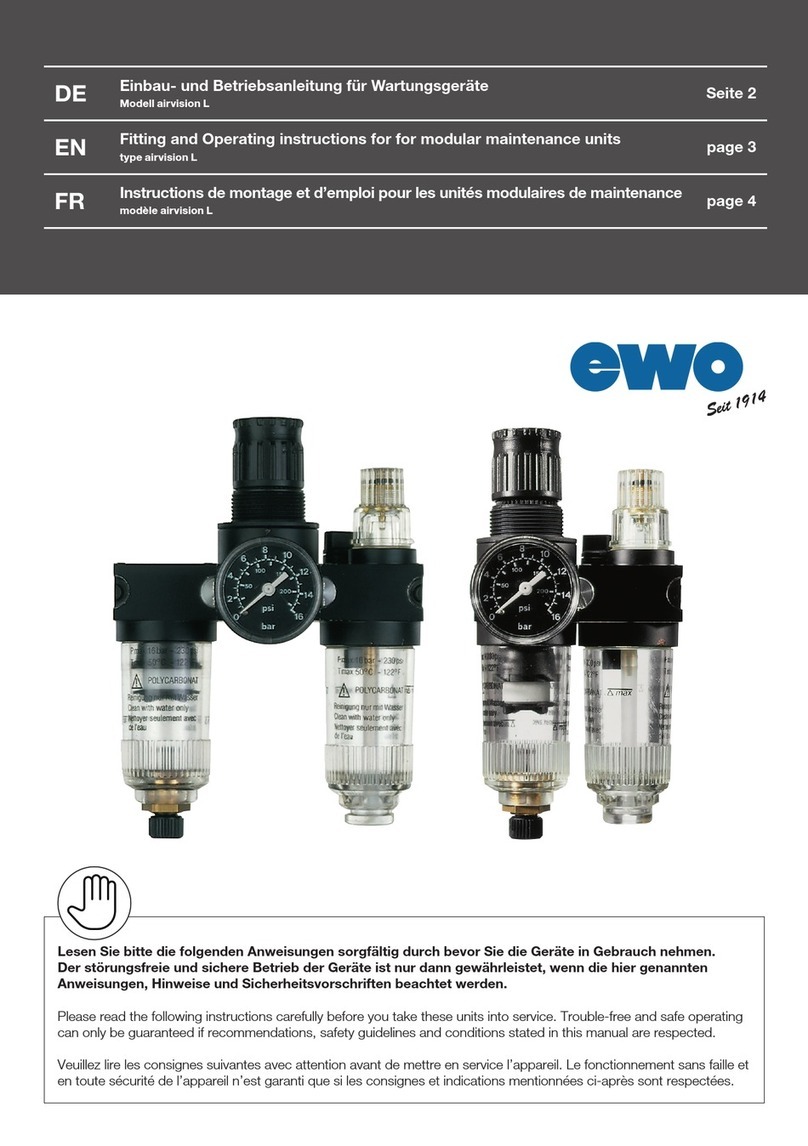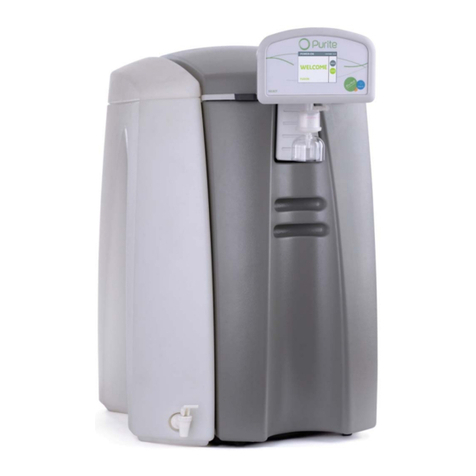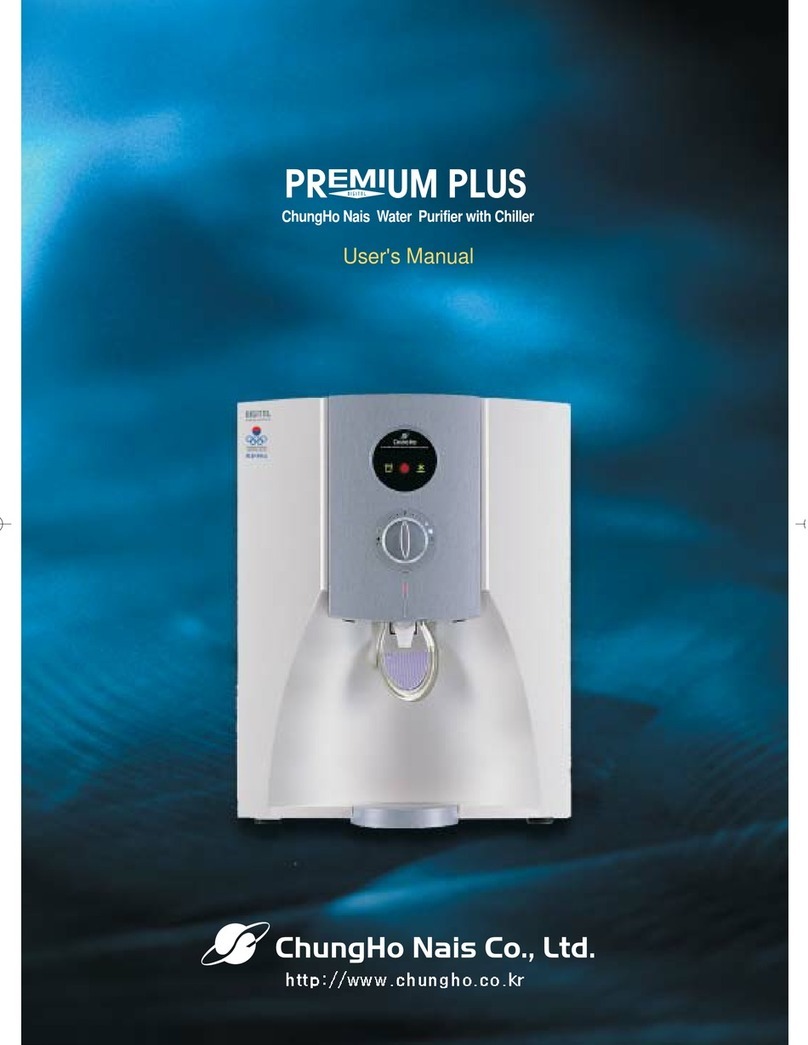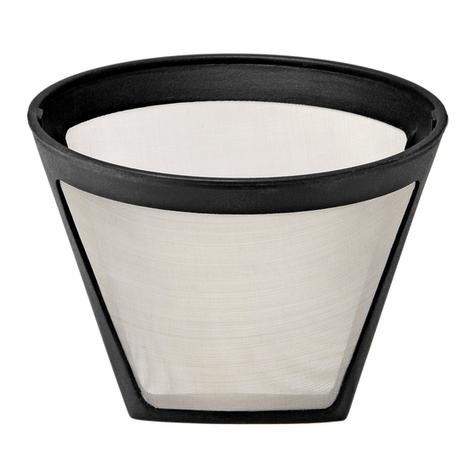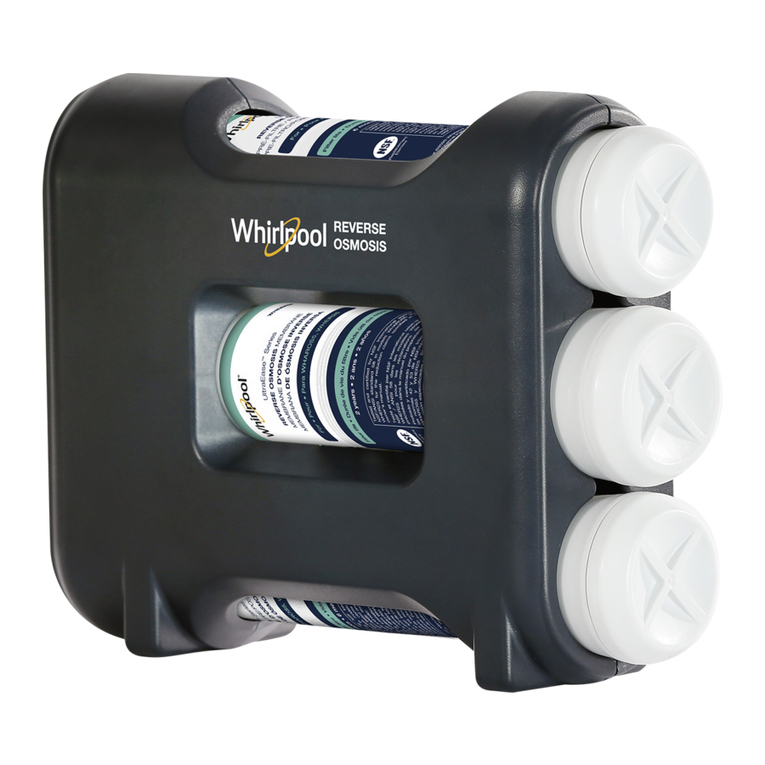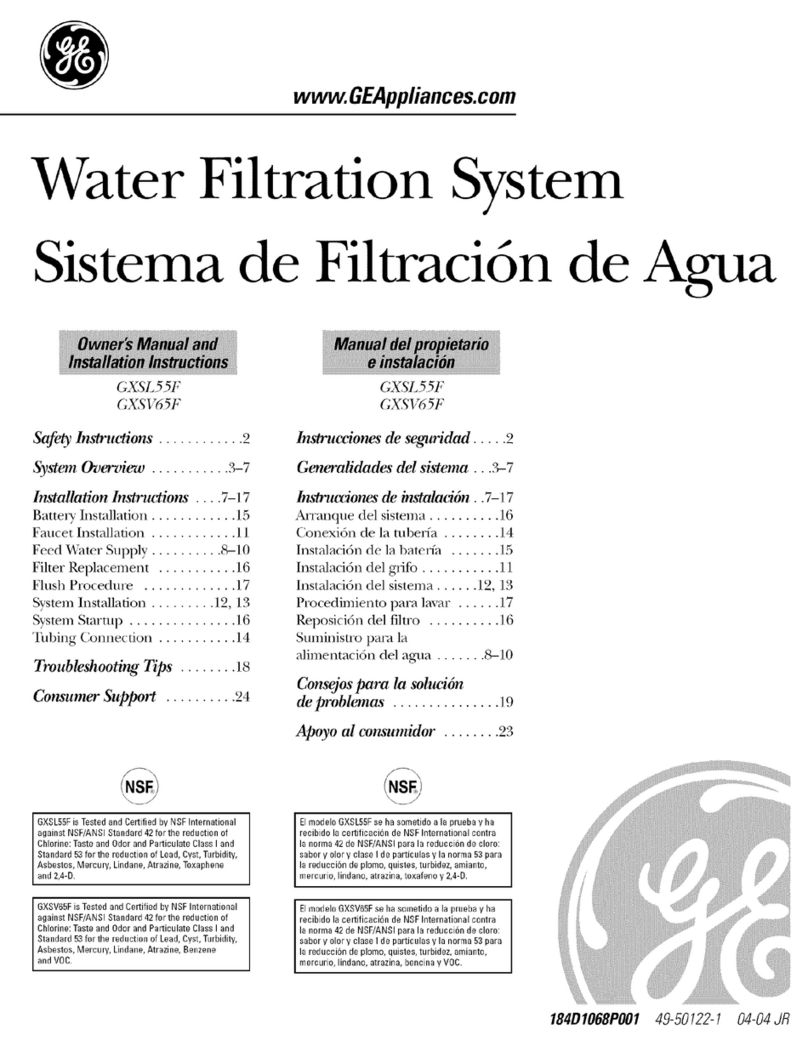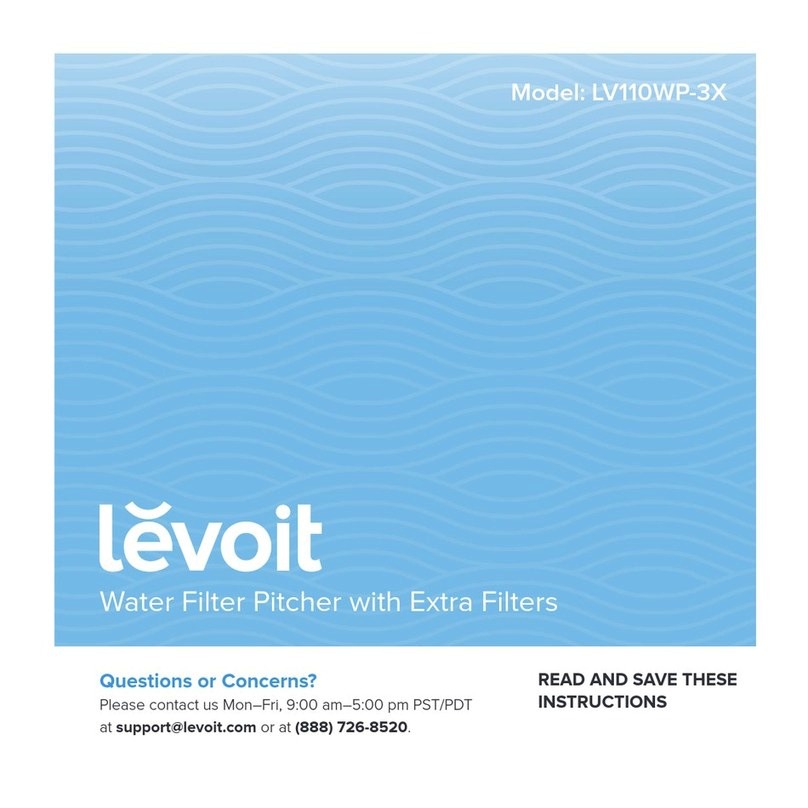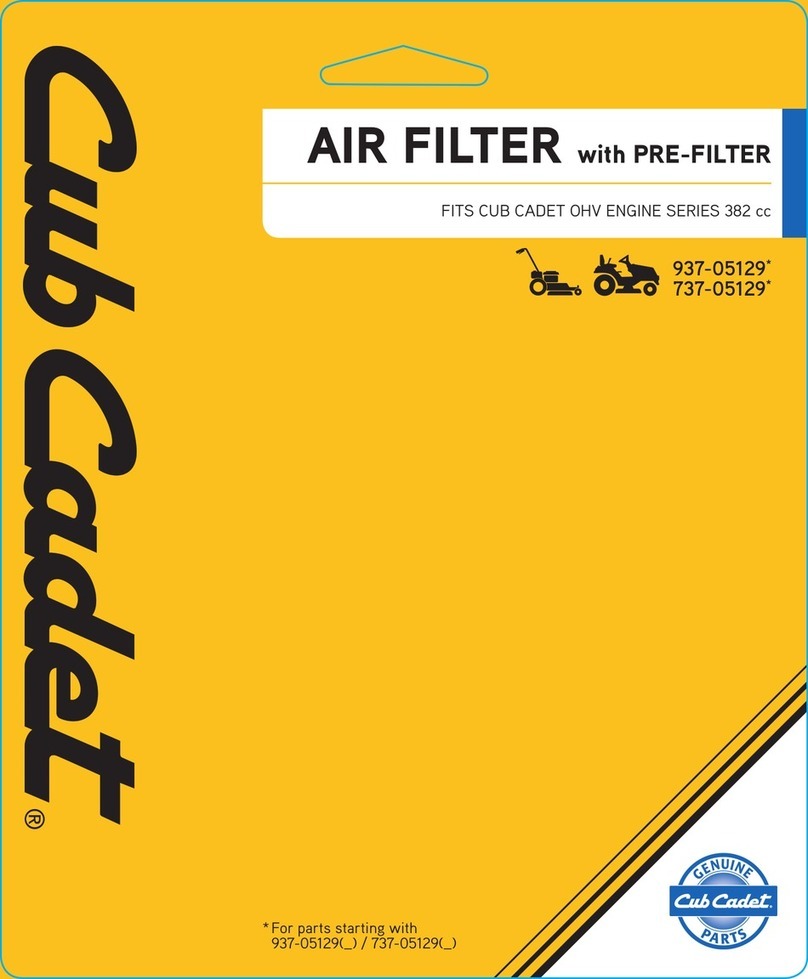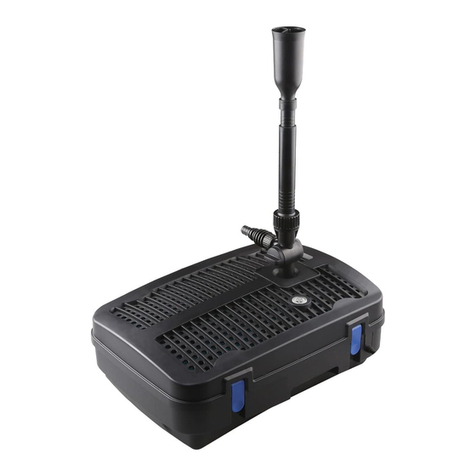ewo VF 436 Series User manual

Lesen Sie bitte die folgenden Anweisungen sorgfältig durch, bevor Sie die Geräte in Gebrauch nehmen.
Der störungsfreie und sichere Betrieb der Geräte ist nur dann gewährleistet, wenn die hier genannten
Anweisungen, Hinweise und Sicherheitsvorschriften beachtet werden.
Please read the following instructions carefully before you take these units into service. Trouble-free and safe operating can
only be guaranteed if recommendations, safety guidelines and conditions stated in this manual are respected.
Veuillez lire les consignes suivantes avec attention avant de mettre en service l‘appareil. Le fonctionnement sans faille et en
toute sécurité de l‘appareil n‘est garanti que si les consignes et indications mentionnées ci-après sont respectées.
Si prega di leggere attentamente le seguenti istruzioni prima di utilizzare i dispositivi. Il funzionamento senza problemi e in
sicurezza dei dispositivi è garantito solo se quelli menzionati qui Istruzioni, note e istruzioni di sicurezza sono osservate.
Przed użyciem urządzeń należy uważnie przeczytać poniższe instrukcje. Bezproblemowa i bezpieczna obsługa urządzeń jest
gwarantowana tylko wtedy, gdy wymienione są tutaj Przestrzegane są instrukcje, uwagi i instrukcje bezpieczeństwa.
Seite 2–5
page 6–9
page 10–13
Pagina 14–17
Strona 18 –22
DE
EN
FR
IT
PL
Betriebsanleitung für Filtersystem airclean
Baureihe VF -MF-AF (436, 437, 438)
Operating instructions for airclean filter system
series VF- MF -AF (436, 437, 438)
Mode d’emploi pour Systeème de filtration airclean
série VF-MF- AF (436, 437, 438)
Istruzioni per l‘uso del sistema di filtraggio airclean
Serie VF-MF- AF (436, 437, 438)
Instrukcja obsługi Elementów filtracyjno odwadniających airclean
serii VF-MF- AF (436, 437, 438)

2
Diese Installations- und Betriebsanleitung soll dazu beitragen,
das Produkt besser kennenzulernen und die bestimmungsge-
mäßen Einsatzmöglichkeiten zu nutzen. Darüber hinaus enthält
die Anleitung wichtige Informationen zur sicheren, sachgerech-
ten und wirtschaftlichen Bedienung.
Alle in dieser Anleitung aufgeführten Anweisungen sind in der
angegebenen Art und Weise durchzuführen, um Gefährdungen
und Schäden zu vermeiden. Weiterhin gelten die jeweiligen
regionalen Bestimmungen zur Unfallverhütung sowie die an-
erkannten fachtechnischen Regeln für sicherheits- und fach-
gerechtes Arbeiten.
Jede Person, die im Betrieb des Anwenders mit der Auf-
stellung, Inbetriebnahme, Wartung/Instandsetzung und der
Funktionsüberwachung des Produktes beauftragt ist, muss die
Anleitung gelesen und verstanden haben. Sie muss am Ein-
satzort ständig verfügbar sein.
Das Filtersystem airclean als Einzelgerät oder Kombination
bietet ein abgestuftes Programm für alle Ansprüche, von
der technisch sauberen Druckluft für Arbeitsgeräte über die
Prozessluft bis zur geruchsfreien Atemluft. Damit dieses Filter-
system langanhaltend für saubere Druckluft sorgen kann, sind
einige Punkte besonders zu beachten.
BESTIMMUNGSGEMÄSSE VERWENDUNG
Das Filtersystem airclean bestehend aus Einzelgeräten oder
Kombinationen ist ausschließlich für folgenden Zweck vorgese-
hen: Gewährleistung technisch sauberer Druckluft für Arbeits-
geräte, Prozessluft und/oder geruchsfreier Umgebungsluft.
Einsatzgebiete:
Einsetzbar sind die Filter in nahezu allen Industriezweigen:
Maschinenbau, Elektro-, Automobilindustrie etc.
Achtung: Die Filtersysteme sind NICHT bestimmt für die Ver-
wendung in der Medizintechnik, sowie der chemischen Indust-
rie oder der Lebensmittelindustrie.
SICHERHEITSHINWEISE/SICHERHEITS-
VORSCHRIFTEN
Vor der Installation/Inbetriebnahme die folgenden Hinweise,
Empfehlungen und Bedienungsanweisungen aufmerksam
durchlesen! Die vorliegenden Dokumente zusammen mit den
Filtern aufbewahren!
Die Druckluftfilter werden nach den aktuellen Sicherheitsvor-
schriften produziert. Der Betrieb, die Wartung, die Installation
und Instandhaltung sowie auch der Transport und die Auf-
stellung können jedoch zusätzliche Gefahren beinhalten. Ganz
besonders Druckluft kann bei Missachtung der Sicherheitsvor-
schriften schwere Verletzungen oder den Tod zur Folge haben.
Deshalb sollte nur fachkundiges und sicherheitstechnisch
geschultes Personal damit arbeiten.
• Beachten Sie beim Gebrauch dieser Filter die Sicherheits-
hinweise, um Gefahren für Personen oder Sachschäden
auszuschließen.
• Beachten Sie gesetzliche Richtlinien und Unfallverhütungs-
vorschriften.
• Beachten Sie ggf. auch die Sicherheitshinweise in den ört-
lichen Werksvorschriften.
Überdruck
Der Filter steht unter Druck. Plötzlich austretende Druckluft
kann zu schweren Verletzungen führen. Führen Sie niemals
mechanische Arbeiten an dem Filter aus, solange der Filter
unter Druck steht.
Heiße Oberflächen
An den Filteroberflächen können sehr heiße Temperaturen ent-
stehen. Die ungeschützte Berührung dieser Oberflächen kann
zu Verbrennungen führen. Vermeiden Sie direkten Kontakt mit
diesen Oberflächen.
Überlastung
Der Filter darf nur mit Druckluft innerhalb der maximal zulässigen
Betriebsbedingungen betrieben werden. Das Überschreiten der
maximal zulässigen Betriebsbedingungen kann zu schweren
Verletzungen und Tod führen. Es ist die Pflicht des Betreibers
sicherzustellen, dass die angeschlossene Druckquelle gegen
Überschreiten des maximal zulässigen Betriebsdrucks und der
zulässigen minimalen und maximalen Temperatur abgesichert ist.
Unerlaubter Eingriff
Veränderungen am Filter können zu gefährlichen Betriebs-
zuständen führen. „Niemals die Funktion des Filters durch
Umbauten verändern. Niemals an drucktragenden Teilen
Schweißarbeiten durchführen.“ Alle Änderungen am Filter
müssen vorher mit dem Hersteller abgestimmt und schriftlich
genehmigt werden.
Naheliegender Missbrauch
Die Verwendung des Filters zu artfremden Zwecken kann zu
Gefahren führen. „Niemals den Filter als Steighilfe verwenden.
Niemals den Filter zum Tragen von fremden Lasten verwenden.
Niemals Komponenten des Filters für fremde Verwendungs-
zwecke einsetzen.“
INBETRIEBNAHME/BEDIENUNG
Das Personal für die Installation, Inbetriebnahme, Wartung/
Instandhaltung und für den täglichen Betrieb muss die ent-
sprechende Qualifikation für die jeweilige Aufgabe aufweisen.
Insbesondere muss es:
• im Umgang mit Druckluft vertraut & unterwiesen sein, sowie
die entsprechenden Gefährdungen kennen.
• den Inhalt dieser Anleitung kennen.
• über eine entsprechende Ausbildung oder Berechtigung
verfügen.
Diese Geräte dürfen nur für den o. g. Zweck verwendet
werden, für den sie speziell entwickelt wurden. Jeglicher
bestimmungswidriger Gebrauch wird als unsachgemäß
betrachtet. Für unsachgemäßen Gebrauch übernimmt
der Hersteller/Lieferant keine Haftung! Das Risiko liegt
in diesem Fall allein beim Benutzer.
!
Diese Geräte können gefährlich sein, wenn sie unsach-
gemäß benutzt werden bzw. die Sicherheitsvorschriften
nicht beachtet werden. Eine falsche Bedienung sowie
Nicht-Beachtung der Sicherheitsvorschriften kann zu
schwerer Körperverletzung sowie Sachschäden führen.
!
DE

3
DE
Vor Beginn aller Arbeiten ist das Gehäuse drucklos zu machen!
Zur sicheren Funktion ist das Produkt innerhalb der Einsatz-
grenzen zu betreiben (insbesondere auf Betriebsdruck, Be-
triebstemperaturen, Volumenströme und Materialbeständigkeit
achten).
Der Filter darf nur mit Druckluft betrieben werden.
Bei Ausführung mit Kondensatableiter ist zu beachten, dass
das Gerät für den angegebenen Druckluft- oder Gasvolumen-
strom ausgelegt ist.
Bei Undichtigkeit ist die Druckluftzufuhr/Vakuumpumpe sofort
abzustellen und die Leckage zu beseitigen.
Die Filter inklusive Zubehör müssen regelmäßig überprüft
werden, insbesondere die Funktion des Kondensatableiters.
Position:
Das Gehäuse ist senkrecht zu montieren. Dabei ist die festge-
legte Durchströmungsrichtung zu beachten (wird mittels Pfeil
angezeigt).
Es sollten keine Schwingungen von Rohrleitungsnetzen auf
das Filtergehäuse übertragen werden können. Lassen Sie zum
Austausch der Filterelemente unterhalb des Gehäuseunterteils
genügend Platz. Achten Sie auch darauf, dass Sie genügend
Platz zur Wand lassen, um z. B. einen Riemenschlüssel ent-
sprechend platzieren zu können. Beachten Sie auch die
maximalen Temperaturbedingungen. Außerdem muss die zu-
geführte Druckluft frei von aggressiven und korrosionsfördern-
den Substanzen sein.
Installation:
Stellen Sie sicher, dass die Rohrleitung drucklos ist! Nachdem
Sie den Platz in der Rohrleitung entsprechend der Aufberei-
tungsstufe und den gegebenen Temperaturbedingungen ge-
wählt haben, schaffen Sie die entsprechenden Verbindungen,
um die Filter gemäß ihrem Anschluss an die bestehende
Rohrleitung anzubinden. Die Rohrleitungen müssen für den
maximal möglichen Betriebsdruck geeignet sein. Je nach
Gehäusegröße kann es sinnvoll sein, zuerst nur den Filter-
kopf zu installieren und das Gehäuseunterteil nach Installation
anzuschrauben. Drehen Sie hierzu das Filterunterteil im Uhr-
zeigersinn vom Kopf ab. Montieren Sie den Filterkopf in der
Rohrleitung (diese muss vorher drucklos geschaltet werden)
und schrauben Sie danach gegen den Uhrzeigersinn das Filter-
unterteil wieder an den Filterkopf. Achten Sie darauf, dass der
O-Ring im Filterkopf richtig platziert ist, das Filterelement in der
Aufhängung sitzt und der Filter vollständig geschlossen ist. Wir
empfehlen jeweils ein Absperrventil vor und nach dem Filter
zu installieren, um das Filtergehäuse für die Wartung separat
abtrennen zu können. Öffnen Sie nach der Installation langsam
das Eingangsventil (nicht im Lieferumfang enthalten). Über-
prüfen Sie alle geschraubten Verbindungsstellen auf Dichtheit.
Bei Leckagen sofort absperren und abdichten. Bitte beach-
ten Sie, dass es bei automatischen Kondensatableitern des
Schwimmertyps bis zu einem gewissen Druck zum Abheben
des Schwimmers kommen kann. Dieses sollte sich spätestens
ab 3 bar eingestellt haben.
TRANSPORT UND LAGERUNG
Trotz aller Sorgfalt können Transportschäden nicht ausge-
schlossen werden. Überprüfen Sie deshalb den Filter nach
dem Transport und dem Entfernen der Verpackung auf mög-
liche Transportschäden. Jede Beschädigung ist unverzüglich
dem Spediteur und dem Hersteller, bzw. seinem Vertriebspart-
ner mitzuteilen.
Ein geeigneter Lagerort und eine gute Vorbereitung des Filters
zum Lagern sind Voraussetzung für den Erhalt der Qualität des
Filters. Lagern Sie den Filter in der mitgelieferten Transportver-
packung. Gegebenfalls sollte der Filter mit einer zusätzlichen
Plane vor Staub geschützt werden. Der Lagerort sollte im In-
nenraum und wettergeschützt (frostfrei) sowie trocken sein.
TECHNISCHE DATEN
Anschluss G ¼ bis G ¾
Max. Betriebsdruck (p₁) 16bar (12 bar mit autom. Anbau-
Ablassventil A)
Min. Betriebsdruck 4bar (autom. Anbau-Ablassventil A)
0bar (Aktivkohlefilter)
Betriebstemperatur +1,5 °C bis +80 °C
Einbaulage/
Durchflussrichtung
senkrecht/ siehe Pfeil
(von innen nach außen)
Partikelfiltration (VF) 99,99 % bezogen auf 1 µm
(feste Verunreinigungen)
Partikelfiltration (MF) 0,01 µm
Restölgehalt (VF) 0,5 mg/m³
Restölgehalt (MF) 0,01 mg/m³
Restölgehalt (AF) 0,003 mg/m³
Druckluftqualität (VF) Partikel 2/Öl 3
(nach ISO 8573-1, Klasse 1)
Druckluftqualität (MF) Partikel 1/Öl 1
(nach ISO 8573-1, Klasse 1)
Druckluftqualität (AF) Öl 1
(nach ISO 8573-1, Klasse 1)
Gehäuse, Behälter Aluminium, lackiert
Filtrationsmedium (VF-MF) Borsilikat-Mikroglasfaser-Gewebe
Filtrationsmedium (AF) nicht gewebtes Medium,
aktivkohle-imprägniert
Nachfiltration (AF) Borsilikat-Mikroglasfaser-Gewebe
Stützkörper,
Drainageschicht Edelstahl, Polyesterfaservlies
Endkappen, O-Ringe PA, NBR
Farbkennzeichnung
Vorfilter (VF)
Mikrofilter (MF)
Aktivkohlefilter (AF)
rot
blau
schwarz

4
WARTUNG UND PFLEGE
Die Lebensdauer und Funktionalität der Geräte hängen von der
Beachtung dieser Bedienungsanleitung ab. Jede Fehlfunktion,
die auf eines der Produkte zurückgeführt werden kann, muss
mit einer außerplanmäßigen Wartungsarbeit behoben werden.
Jede außerplanmäßige Wartungsarbeit muss von Ihrem Liefe-
ranten durchgeführt werden. Anderes Personal darf außerplan-
mäßige Wartungsarbeiten nur nach absolvierten Lehrgängen,
die von Ihrem Lieferanten authorisiert wurden, durchführen.
Wechsel der Filterelemente:
Schalten Sie das Gehäuse drucklos. Sichern Sie eventuelle
Absperrventile gegen unbeabsichtigtes Öffnen. Überprüfen
Sie die Drucklosigkeit am Kondensatableiter durch manuelles
Öffnen! Verwenden Sie nur geeignetes Werkzeug, um das
Filterunterteil zu drehen! Einen Austausch der verunreinigten
Einsätze empfehlen wir bei einem Druckabfall von ca. 0,6 bar
(Roter Bereich der Manometerskala) bzw. nach ca. 2.000 Be-
triebsstunden.
Schrauben Sie das Gehäuseunterteil (Glocke) gegen den Uhr-
zeigersinn auf. (Auch manuell möglich, da Kopf und Glocke mit
einem Bajonettverschluss verbunden sind).
Nehmen Sie das Element aus dem Filterunterteil heraus.
Entnehmen Sie das neue Filterelement der Kartonage, fetten
Sie den Elemente-O-Ring (wir empfehlen Lebensmittelfett) und
setzen das neue Element in das Filterunterteil ein. Achten Sie
dabei darauf, dass die drei Flügel am Filterelement in die ent-
sprechenden Aussparungen im Gehäuse gleiten. Kontrollieren
Sie den O-Ring im Filtergehäuse und fetten Sie ggf. auch diesen
ein. Das Gewinde des Filterunterteils ebenfalls einfetten.
Beseitigen Sie eventuelle Verschmutzungen im Filterunterteil und
schrauben Sie es im Uhrzeigersinn wieder an den Filterkopf.
Öffnen Sie die Druckluftzufuhr wieder langsam und kontrol-
lieren Sie auf Dichtigkeit. Bei Leckagen bitte sofort drucklos
schalten und Leckagen beseitigen.
Bei Einbau/Inbetriebnahme der Druckluftfilter bitte immer das
Hinweis-Etikett für den Filterwechsel auf dem Filtergehäuse
(Glocke) ausfüllen. Nach ca. 2000 Betriebsstunden Filterein-
satz wechseln.
Wechsel des Kondensatableiters:
Durch Verklebung sowie Rost- und Staubpartikel kann es
notwendig sein, den Kondensatableiter regelmäßig auszutau-
schen. Gehen Sie in diesem Fall bitte vor wie hier beschrieben:
Drehen Sie den Kondensatableiter an der Schlüsselfläche
(SW 15) im Uhrzeigersinn, um ihn zu demontieren. Drehen Sie
anschließend den neuen Kondensatableiter auf die gleiche
Art und Weise gegen den Uhrzeigersinn ein.
Bitte beachten Sie, dass die ausgebauten Bauteile, ins-
besondere die Filterelemente, mit Kompressorenölen
kontaminiert sind. Diese sind entsprechend den regio-
nalen Entsorgungsrichtlinien und Bestimmungen für
ölbelastetes Material zu entsorgen!
REPARATUR
Reparaturen dürfen nur vom Hersteller oder autorisierten
Reparaturwerkstätten, unter Verwendung von Original-
Ersatzteilen durchgeführt werden. Unternehmen Sie keine
eigenen Reparaturversuche, Sie verlieren die Garantie.
GEWÄHRLEISTUNG
Die airclean Druckluftfilter sind nach dem Stand der Technik
gefertigt und werden vor Auslieferung einer umfangreichen
Prüfung, auch auf Sicherheit, unterzogen.
Dennoch können Gefahren für Personen oder Sachgut entste-
hen. Dies kann zum Verlust jeglicher Gewährleistungsansprüche
führen. Mängel, die nachweislich auf einem Werksfehler beru-
hen, beheben wir selbstverständlich kostenlos. Voraussetzung
ist, dass Sie diesen Mangel unverzüglich nach Feststellung und
innerhalb der von uns gewährten Garantiezeit melden.
Schäden, die durch nicht bestimmungsgemäßen Gebrauch
sowie infolge von Nichtbeachtung der Bedienungsanleitung
entstanden sind, sind von dieser Gewährleistung ausgenom-
men. Die Garantiezeit beträgt 12 Monate. Wenn nicht anders
definiert, gelten für Zubehörteile 6 Monate. Garantieleistungen
bewirken keine Verlängerung der Garantiefrist. Wurden neben
der Garantieleistung notwendige Reparaturen, Justagen oder
dergleichen durchgeführt, sind die Garantieleistungen kosten-
los, die anderen Leistungen werden aber ebenso wie Transport
und Verpackung berechnet. Weitergehende oder andere An-
sprüche, insbesondere bei entstandenen Schäden die nicht
das Gerät betreffen, sind –soweit eine Haftung nicht zwingend
gesetzlich vorgeschrieben ist–ausgeschlossen.
AUSSCHLUSS DER GEWÄHRLEISTUNG
Die Gewährleistung entfällt in den folgenden Fällen:
Die Bedienungsanleitung wurde bei der ersten Inbetriebnahme
und Wartung nicht befolgt.
Das Gerät wurde auf unzulässige und unsachgemäße Art
verwendet.
Das Gerät wurde trotz offensichtlicher Mängel verwendet.
Es wurden anstelle von Original-Teilen andere Ersatz- oder
Austauschteile verwendet.
Die zulässigen Betriebsparameter wurden nicht beachtet.
Es wurden nicht autorisierte Änderungen am Gerät durch-
geführt bzw. wenn Teile des Gerätes demontiert wurden, die
nicht geöffnet werden dürfen (außer zu Wartungszwecken).
Es wurden Aufkleber am Gerät verändert, beschädigt oder
entfernt.
Diese Bedienungsanleitung wurde nach bestem Wissen
möglichst vollständig und genau zusammengestellt. Nichts-
destotrotz übernimmt ewo keine Verantwortung für Fehler und
Unterlassungen oder Verpflichtungen, die sich aus der Verwen-
dung dieser Bedienungsanleitung ergeben.
Der Inhalt dieser Bedienungsanleitung orientiert sich am aktu-
ellen Stand der geltenden Rechtssprechung zum Erstellungs-
zeitpunkt und kann jederzeit geändert werden. Der Hersteller
übernimmt keine Verantwortung für einen möglichen Schaden
der durch den Einsatz dieser Bedienungsanleitung an einem
tatsächlichen bzw. möglicherweise gelieferten Gerät entsteht,
dies unter dem Vorbehalt einer vorsätzlichen bzw. grob fahrläs-
sigen Handlung seitens ewo. Ausführliche Informationen über
die Verwendung der Bedienungsanleitung, die Wartung und/
oder Reparatur des Gerätes erhalten Sie bei unserem techni-
schen Kundendienst oder bei Ihrem Vertragshändler.
DE

5
DE
HERSTELLERERKLÄRUNG
Der Hersteller:
Armaturen- und Autogengerätefabrik ewo
Hermann Holzapfel GmbH & Co. KG
Heßbrühlstr. 45 – 47
70565 Stuttgart
erklärt hiermit, dass die nachfolgend bezeichneten Produkte, mit den von uns gelieferten Ausführungen
Druckluft-Filtersysteme airclean
Baureihe: 436, 437, 438 und deren Kombinationen, die Anforderungen nachfolgender Richtlinie und Norm erfüllen:
DRUCKGERÄTERICHTLINIE 2014/68/EU (Artikel 4, Absatz 3)
Einstufung gemäß DGRL Artikel 13: Druckgerät für Fluide der Gruppe 2
Druckluftgeräte nach Artikel 4, Absatz 3 der Druckgeräterichtlinie 2014/68/EU dürfen nicht die in Artikel 18 genannte
CE-Kennzeichnung tragen.
Die Druckluftfilter wurden einer Druckprüfung mit 24 bar Wasserdruck, und einer Dichtheitsprüfung mit Druckluft, bei 7 bar
unterzogen. Bei den Prüfungen ergaben sich keine Mängel.
Die Geräte sind einzuordnen als: Druckhaltendes Ausrüstungsteil.
Die Überwachung der Fertigung erfolgt über ein internes Qualitätssicherungssystem.
Die oben genannten Produkte wurden wie folgt gekennzeichnet:
Produktionsnummer siehe Filter
Typ siehe Typenschild
min./max. zul. Betriebsdruck 1,5 /16 bar (12 bar mit autom. Anbau-Ablassventil A)
min./max. zul. Temperatur +1,5 °C/+80 °C
min./max. zul. Temperatur CA +1 °C/ +50 °C
Volumen V 1,1 l
Armaturen- und Autogengerätefabrik ewo
Hermann Holzapfel GmbH & Co. KG
Leiter Entwicklung und Qualitätssicherung
Björn Peltsch
Stuttgart, den 12.07.2021
10000
1000
100
10
1
0,1
0,1 1 10 100 1000 10000
Volumen V [ l]
p = 0,5 barArt. 3 Abs. 3
maximal zulässiger Druck PS [ bar ]
Behälter Fluid: Gas, Fluidgruppe: 2 Diagramm 2, Art. 3, Anhang II
IV
IIIIII
×

6
These installation and operating instructions are intended to
help you get to know the product better and to make use of the
intended application possibilities. In addition, the instructions
contain important information on safe, proper and economical
operation.
All instructions in this manual must be carried out in the
manner specified in order to avoid hazards and damage.
Furthermore, the respective regional regulations for accident
prevention as well as the recognised technical rules for safe
and professional work apply.
Every person in the user's company who is responsible for the
installation, commissioning, maintenance/repair and function
monitoring of the product must have read and understood the
instructions. They must be available at the place of use at all
times.
The airclean filter system as a single unit or as a combination
of the individual units offers a graduated programme for all re-
quirements, starting from technically clean compressed air for
work equipment up to process air and odour-free breathing air.
To ensure that this filter system can provide clean compressed
air over a long period of time, there are a number of points that
require special attention.
INTENDED USE
The airclean filter system consisting of individual units or com-
binations is intended exclusively for the following purpose:
Ensuring technically clean compressed air for work equipment,
process air and/or odour-free ambient air.
Operating fields:
The filters can be used in almost all branches of industry:
Mechanical engineering, electrical industry, automotive industry,
etc.
Attention: The filter systems are NOT intended for use in
medical technology, the chemical industry or the food industry.
SAFETY INSTRUCTIONS/REGULATIONS
Read the following notes, recommendations and operating
instructions carefully before installation/commissioning! Keep
these documents together with the filters!
The compressed air filters are produced according to the cur-
rent safety regulations. Nevertheless, operation, maintenance,
installation and servicing, as well as transport and installation,
may involve additional hazards. Compressed air in particular
can cause serious injuries or death if the safety regulations are
disregarded. Therefore, only skilled and safety-trained person-
nel should work with it.
• Observe the safety instructions when using these filters to
avoid danger to persons or damage to property.
• Observe legal guidelines and accident prevention regulations.
• If necessary, also observe the safety instructions in the local
factory regulations.
Overpressure
The filter is under pressure. Sudden release of compressed air
can cause serious injury. Never carry out mechanical work on
the filter while it is under pressure.
Hot surfaces
Very hot temperatures can arise on the filter surfaces. Unpro-
tected contact with these surfaces can cause burns. Avoid
direct contact with these surfaces.
Congestion
The filter may only be operated with compressed air within the
maximum permissible operating conditions. Exceeding the
maximum permissible operating conditions can lead to serious
injury and death. It is the operator's duty to ensure that the
connected pressure source is protected against overriding the
maximum permissible operating pressure as well as the mini-
mum and maximum permissible temperature.
Unauthorised interference
Modifications to the filter can lead to dangerous operating
conditions. “Never change the function of the filter by making
modifications. Never carry out welding work on pressure-bear-
ing parts.” All modifications to the filter must be agreed in ad-
vance with the manufacturer and approved by him with written
consent.
Obvious misuse
Using the filter for purposes other than those for which it is in-
tended can be dangerous. “Never use the filter as a climbing
aid. Never use the filter to carry other people's loads. Never
use components of the filter for other purposes.”
COMMISSIONING/OPERATION
The personnel for installation, commissioning, maintenance/
servicing and for daily operation must have the appropriate
qualification for the respective task. In particular, they must:
• be familiar with compressed air and its handling, and know
the corresponding hazards.
• know the contents of this manual.
• have the appropriate training or authorisation.
Before starting any work, depressurise the housing!
For safe operation, the product must be operated within the
operating limits (pay particular attention to operating pressure,
operating temperatures, volume flows and material resistance).
The filter may only be operated with compressed air.
In the case of a version with a condensate drain, it must be
ensured that the unit is designed for the specified compressed
air or gas volume flow.
In case of leakage, the compressed air supply/vacuum pump
must be shut off immediately and the leakage eliminated.
The filters including accessories must be checked regularly,
especially the functioning of the condensate drain.
This equipment may only be used for the above purpose
for which it was specifically designed. Any use contrary
to the intended purpose is considered improper. The
manufacturer/supplier accepts no liability for improper
use! The risk in this case lies solely with the user.
!
These devices can be dangerous if used improperly
or if the safety instructions are not observed. Incorrect op-
eration and non-observance of the safety instructions can
lead to serious physical injury and damage to property.
!
EN

7
EN
Position:
The housing must be mounted vertically. The specified direc-
tion of flow must be observed (indicated by an arrow).
No vibrations from pipe networks should be able to be trans-
mitted to the filter housing. Leave enough space below the
lower part of the housing to replace the filter elements. Also
make sure that you leave enough space to the wall, e.g. to
be able to place a belt spanner accordingly. Also observe the
maximum temperature conditions. In addition, the supplied
compressed air must be free of aggressive and corrosive
substances.
Installation:
Make sure that the pipeline is depressurised! After choosing
the place in the pipeline according to the treatment stage
and the given temperature conditions, create the appropriate
connections to connect the filters to the existing pipeline ac-
cording to their connection. The piping must be suitable for the
maximum possible operating pressure. Depending on the size
of the housing, it may be useful to install only the filter head first
and screw on the lower part of the housing after installation. To
do this, turn the filter bottom part clockwise off the head. Install
the filter head in the pipeline (the pipeline must be depressur-
ised beforehand) and then screw the filter base back onto the
filter head in an anti-clockwise direction. Make sure that the
O-ring is correctly placed in the filter head, the filter element
is seated in the suspension and the filter is completely closed.
We recommend installing a shut-off valve before and after the
filter in order to be able to disconnect the filter housing sepa-
rately for maintenance. After installation, slowly open the inlet
valve (not included in the scope of delivery). Check all screwed
connection points for leaks. In case of leakage, shut off and
seal immediately. Please note that with automatic condensate
drains of the float type, the float may lift off up to a certain pres-
sure. This should have set in from 3 bar at the latest.
SHIPPING AND STORAGE
Despite all care, transport damage cannot be ruled out.
Therefore, check the filter for possible transport damage after
shipping and removing the packaging. Any damage must be
reported immediately to the delivery company and the man-
ufacturer or its sales partner. A suitable storage location and
good preparation of the filter for storage are prerequisites for
maintaining the quality of the filter. Store the filter in the trans-
port packaging supplied. If necessary, the filter should be pro-
tected from dust with an additional cover. The storage location
should be indoors and protected from the weather (frost-free)
as well as dry.
TECHNICAL DATA
Connection G ¼ up to G ¾
Max. Operating pressure (p₁) 16bar (12 bar with automatic
attachable drain valve A)
Min. operating pressure
4bar/0bar
(autom. attached blow-off
valve A/activated carbon filter AF)
Operating temperature +1.5 °C up to +80 °C
Mounting position /
Flow direction
vertical/ as indicated by the arrow
(from the inside to the outside)
Particle filtration
(prefilter VF)
99.99% referred to 1µm
(solid impurities)
Particle filtration
(microfilter MF) 0.01 µm
Residual oil content
(prefilter VF) 0.5 mg/m³
Residual oil content
(microfilter MF) 0.01 mg/m³
Residual oil content
(activated carbon filter AF) 0.003 mg/m³
Compressed air quality
(prefilter VF)
particle 2/ oil 3
(according to ISO 8573-1, class 1)
Compressed air quality
(microfilter MF)
particle 1/oil 1
(according to ISO 8573-1, class 1)
Compressed air quality (ac-
tivated carbon filter AF)
oil 1
(according to ISO 8573-1, class 1)
Housing, bowl Aluminium, painted
Filtration media
(prefilter-microfilter VF-MF) Borosilicate microfibreglass fabric
Filtration media
(activated carbon filter AF)
non-woven medium,
activated carbon impregnated
Post-filtration
(activated carbon filter AF) Borosilicate microfibreglass fabric
Supporting body,
Drainage layer
Stainless steel, polyester fibre
fleece
Cover caps, O-rings PA, NBR
Colour coding
prefilter (VF)
microfilter (MF)
activated carbon filter (AF)
red
blue
black

8
MAINTENANCE AND CARE
The service life and functionality of the units depend on the
observance of these operating instructions. Any malfunction
that can be traced back to one of the products must be rem-
edied with unscheduled maintenance work. Any unscheduled
maintenance work must be carried out by your supplier. Other
personnel may only perform unscheduled maintenance after
completing training courses authorised by your supplier.
Changing the filter elements:
Depressurise the housing. Secure any shut-off valves against
unintentional opening. Check that the steam trap is depressur-
ised by opening it manually! Only use suitable tools to turn the
filter base! We recommend replacing the contaminated inserts
when the pressure drops by approx. 0.6 bar (red area of the
pressure gauge scale) or after approx. 2,000 operating hours.
Unscrew the lower part of the housing (bell) counterclockwise.
(Also possible manually, as the top and body (bell) are con-
nected with a bayonet catch).
Remove the element from the filter base.
Remove the new filter element from the packing, grease the
element O-ring (we recommend food grade grease) and insert
the new element into the filter body. Make sure that the three
wings on the filter element slide into the corresponding notches
in the housing. Check the O-ring in the filter housing and
grease it if necessary. Also grease the thread of the filter body.
Remove any dirt in the filter body and screw it back onto the
filter head in a clockwise direction.
Slowly open the compressed air supply again and check for
leaks. In case of leakage, please depressurise immediately and
eliminate leakage.
When installing/ commissioning the compressed air filters,
please always fill out the information sticker for filter replace-
ment on the filter housing (year and month of installation).
Change the filter element after approx. 2000 operating hours.
Changing the condensate drain:
Due to adhesion as well as rust and dust particles, it may be
necessary to replace the condensate drain regularly. In this
case, please proceed as described here:
Turn the condensate drain at the key area (AF 15) clockwise to
dismantle it. Then screw in the new condensate drain counter-
clockwise in the same way.
Please note that the removed components, especially
the filter elements, are contaminated with compressor
oils. These must be disposed of in accordance with the
regional disposal guidelines and regulations for oil-con-
taminated material!
REPAIR
Repairs may only be carried out by the manufacturer or au-
thorised repair workshops, using original spare parts. Do not
attempt any repairs by yourself, you will lose the warranty.
WARRANTY
The compressed air filters are manufactured according to the
state of the art and are subjected to extensive testing, including
safety testing, before delivery.
Nevertheless, dangers to persons or property may arise. This
can lead to the loss of any warranty claims. Defects that are
demonstrably due to a factory defect will of course be repaired
free of charge. The prerequisite is that you report this defect
immediately upon discovery and within the warranty period
granted by us.
Damage caused by improper use and by non-compliance with
the operating instructions is excluded from this warranty. The
warranty period is 12 months. Unless otherwise defined, 6
months apply to accessories. Warranty services do not result
in an extension of the warranty period. If necessary repairs,
adjustments or similar have been carried out in addition to the
guarantee service, the guarantee services are free of charge,
but the other services will be charged for, as will transport and
packaging. Further or other claims, in particular in the case of
damage that does not affect the device, are excluded - unless
liability is mandatory by law.
EXCLUSION OF WARRANTY
The warranty does not apply in the following cases:
The operating instructions were not followed during initial com-
missioning and maintenance.
The unit has been used in an unauthorised and improper
manner.
The unit was used despite obvious defects.
Other replacement or exchange parts were used instead of
original parts.
The permissible operating parameters were not observed.
Unauthorised modifications have been made to the unit or
if parts of the unit have been dismantled that must not be
opened (except for maintenance purposes).
Stickers on the unit have been changed, damaged or removed.
These operating instructions have been compiled as com-
pletely and accurately as possible to the best of our knowl-
edge. Nevertheless, ewo accepts no responsibility for errors
and omissions or obligations arising from the use of these
operating instructions.
The contents of these operating instructions are based on the
current state of the law at the time of preparation and may be
changed at any time. The manufacturer accepts no respon-
sibility for any damage caused by the use of these operating
instructions to an actual or possibly supplied device, subject to
intentional or grossly negligent action on the part of ewo. For
detailed information on the use of the manual, maintenance
and/or repair of the appliance, please contact our technical
service or your authorised dealer.
EN

9
EN
MANUFACTURER'S DECLARATION
The manufacturer:
Armaturen- und Autogengerätefabrik ewo
Hermann Holzapfel GmbH & Co. KG
Heßbrühlstr. 45 –47
70565 Stuttgart
hereby declares that the products designated below, with the versions supplied by us
Compressed air filter systems airclean
Series: 436, 437, 438 and combinations thereof, which comply with the requirements of the following directive and standard:
PRESSURE EQUIPMENT DIRECTIVE 2014/68/EU (article 4, paragraph 3)
Classification according to PED Article 13: Pressure equipment for fluids of group 2
Compressed air equipment according to Article 4, paragraph 3 of the Pressure Equipment Directive 2014/68/EU shall not bear the
CE marking referred to in Article 18.
The compressed air filters were subjected to a pressure test with 24 bar water pressure and a leak test with compressed air at 7 bar.
The tests did not reveal any defects.
The equipment is to be classified as: Pressure-maintaining equipment.
Production is monitored by an internal quality assurance system.
The above products have been labelled as follows:
Production number refer to filter
Type refer to type plate
Min. / max. perm. operating pressure 1.5/ 16 bar (12 bar with autom. attach. drain valve A)
Min. / max. perm. temperature +1.5 °C/+80 °C
Min. / max. perm. temperature CA +1 °C /+50 °C
Volume V 1.1 l
Armaturen- und Autogengerätefabrik ewo
Hermann Holzapfel GmbH & Co. KG
Head of Development and Quality Assurance
Björn Peltsch
Stuttgart, the 12.07.2021
10000
1000
100
10
1
0.1
0.1 1 10 100 1000 10000
Volume V [ l]
p = 0.5 barArt. 3 Para. 3
max. permitted pressure PS [ bar ]
Container fluid: gas, fluid group: 2 Diagram 2, Art. 3, Annex II
IV
IIIIII
×

10
Ces instructions d'installation et d'utilisation ont pour but
de vous aider à mieux connaître le produit et à exploiter les
possibilités d'application prévues. En outre, les instructions
contiennent des informations importantes sur un fonctionne-
ment sûr, correct et économique.
Toutes les instructions de ce manuel doivent être exécutées de
la manière indiquée afin d'éviter les risques et les dommages.
En outre, les réglementations régionales respectives pour la
prévention des accidents ainsi que les règles techniques re-
connues pour un travail sûr et professionnel s'appliquent.
Toute personne de l'entreprise utilisatrice chargée de l'installa-
tion, de la mise en service, de la maintenance/réparation et du
contrôle du fonctionnement du produit doit avoir lu et compris
les instructions. Ils doivent être disponibles sur le lieu d'utilisa-
tion à tout moment.
Le système de filtration airclean, en tant qu'unité unique ou
en combinaison, offre un programme gradué pour toutes les
exigences, de l'air comprimé techniquement propre pour les
équipements de travail à l'air de traitement et à l'air respirable
sans odeur. Pour que ce système de filtrage puisse fournir de
l'air comprimé propre sur une longue période, il convient de
respecter un certain nombre de points en particulier.
UTILISATION CONFORME
Le système de filtration airclean, composé d'unités indivi-
duelles ou de combinaisons, est exclusivement destiné à
l'usage suivant : Assurer un air comprimé techniquement
propre pour les équipements de travail, l'air de traitement et/ou
l'air ambiant sans odeur.
Domaines d'application :
Les filtres peuvent être utilisés dans presque toutes les
branches de l'industrie : Ingénierie mécanique, industrie élec-
trique, industrie automobile, etc.
Attention : Les systèmes de filtration NE SONT PAS destinés
à être utilisés dans la technologie médicale, l'industrie
chimique ou l'industrie alimentaire.
INSTRUCTIONS DE SÉCURITÉ/RÈGLE-
MENTS DE SÉCURITÉ
Lisez attentivement les notes, recommandations et instructions
d'utilisation suivantes avant l'installation/mise en service !
Conservez ces documents avec les filtres !
Les filtres à air comprimé sont produits conformément aux
règles de sécurité en vigueur. Cependant, l'utilisation, la main-
tenance, l'installation et l'entretien ainsi que le transport et
l'installation peuvent comporter des risques supplémentaires.
L'air comprimé, en particulier, peut provoquer des blessures
graves, voire mortelles, si les règles de sécurité ne sont pas
respectées. Par conséquent, seul le personnel qualifié et formé
à la sécurité doit travailler avec lui.
• Respectez les consignes de sécurité lors de l'utilisation de
ces filtres afin d'éviter tout danger pour les personnes ou tout
dommage matériel.
• Respecter les directives légales et les règles de prévention
des accidents.
• Si nécessaire, respectez également les consignes de sécu-
rité de la réglementation locale de l'usine.
Surpression
Le filtre est sous pression. La libération soudaine d'air com-
primé peut provoquer des blessures graves. N'effectuez jamais
de travaux mécaniques sur le filtre lorsqu'il est sous pression.
Surfaces chaudes
Des températures très élevées peuvent apparaître sur les
surfaces du filtre. Un contact non protégé avec ces surfaces
peut provoquer des brûlures. Évitez tout contact direct avec
ces surfaces.
Surcharge
Le filtre ne doit être utilisé qu'avec de l'air comprimé dans
les conditions de fonctionnement maximales autorisées. Le
dépassement des conditions de fonctionnement maximales
autorisées peut entraîner des blessures graves, voire mortelles.
Il incombe à l'exploitant de s'assurer que la source de pres-
sion raccordée est protégée contre tout dépassement de la
pression de service maximale admissible et des températures
minimale et maximale admissibles.
Interférence non autorisée
Toute modification du filtre peut entraîner des conditions de
fonctionnement dangereuses. « Ne changez jamais la fonction
du filtre en y apportant des modifications. N'effectuez jamais
de travaux de soudure sur des pièces soumises à la pression.
» Toute modification du filtre doit faire l'objet d'un accord préa-
lable avec le fabricant et être approuvée par écrit.
Mauvais usage évident
L'utilisation du filtre à des fins autres que celles pour lesquelles
il est prévu peut être dangereuse. « N'utilisez jamais le filtre
comme aide à l'escalade. N'utilisez jamais le filtre pour porter
les charges d'autres personnes. N'utilisez jamais les compo-
sants du filtre à d'autres fins. »
MISE EN COMMISSION/MISE EN FONC-
TIONNEMENT
Le personnel chargé de l'installation, de la mise en service, de
la maintenance et de l'entretien, ainsi que de l'exploitation quo-
tidienne, doit posséder la qualification appropriée pour chaque
tâche. En particulier, ils doivent :
• être familiarisé et formé à la manipulation de l'air comprimé et
connaître les dangers correspondants.
• Connaître le contenu de ce manuel.
• avoir la formation ou l'autorisation appropriée.
Cet équipement ne peut être utilisé que pour l'usage
ci-dessus pour lequel il a été spécifiquement conçu.
Toute utilisation contraire à la finalité prévue est consi-
dérée comme abusive. Le fabricant/fournisseur décline
toute responsabilité en cas d'utilisation inappropriée !
Le risque dans ce cas incombe uniquement à l'utilisa-
teur.
!
Ces appareils peuvent être dangereux s'ils sont utilisés
de manière incorrecte ou si les consignes de sécurité
ne sont pas respectées. Une utilisation incorrecte et le
non-respect des consignes de sécurité peuvent entraî-
ner des blessures physiques graves et des dommages
matériels.
!
FR

11
FR
Avant de commencer les travaux, le boîtier doit être dépres-
surisé !
Pour un fonctionnement sûr, le produit doit être utilisé dans les
limites de fonctionnement (attention particulière à la pression
de fonctionnement, aux températures de fonctionnement, aux
débits volumiques et à la résistance des matériaux).
Le filtre ne doit être utilisé qu'avec de l'air comprimé.
Dans le cas d'une version avec une évacuation des conden-
sats, il faut s'assurer que l'unité est conçue pour le débit volu-
mique d'air comprimé ou de gaz spécifié.
En cas de fuite, l'alimentation en air comprimé/pompe à vide
doit être immédiatement arrêtée et la fuite éliminée.
Les filtres, y compris les accessoires, doivent être contrôlés
régulièrement, notamment le fonctionnement de l'évacuation
des condensats.
Position :
Le boîtier doit être monté verticalement. Le sens d'écoulement
spécifié doit être respecté (indiqué par une flèche).
Aucune vibration provenant des réseaux de canalisations ne
doit pouvoir être transmise au boîtier du filtre. Laissez suffi-
samment d'espace sous la partie inférieure du boîtier pour
remplacer les éléments filtrants. Veillez également à laisser suf-
fisamment d'espace au mur, par exemple pour pouvoir placer
une clé à courroie en conséquence. Respectez également les
conditions de température maximale. En outre, l'air comprimé
fourni doit être exempt de substances agressives et corrosives.
Installation :
Assurez-vous que la canalisation est dépressurisée ! Après
avoir choisi l'emplacement dans la canalisation en fonction
de l'étape de traitement et des conditions de température
données, créez les connexions appropriées pour raccorder les
filtres à la canalisation existante en fonction de leur raccorde-
ment. La tuyauterie doit être adaptée à la pression de fonction-
nement maximale possible. Selon la taille du boîtier, il peut être
utile d'installer d'abord uniquement la tête du filtre et de visser
la partie inférieure du boîtier après l'installation. Pour ce faire,
tournez la partie inférieure du filtre dans le sens des aiguilles
d'une montre pour la retirer de la tête. Installez la tête du filtre
dans la canalisation (la canalisation doit être dépressurisée au
préalable), puis revissez la base du filtre sur la tête du filtre dans
le sens inverse des aiguilles d'une montre. Assurez-vous que le
joint torique est correctement positionné dans la tête du filtre,
que l'élément filtrant est assis dans la suspension et que le filtre
est complètement fermé. Nous recommandons d'installer une
vanne d'arrêt avant et après le filtre afin de pouvoir déconnec-
ter le boîtier du filtre séparément pour l'entretien. Après l'instal-
lation, ouvrez lentement la valve d'entrée (non incluse). Vérifiez
l'étanchéité de tous les points de connexion vissés. En cas de
fuite, fermer et sceller immédiatement. Veuillez noter qu'avec
les purgeurs automatiques de condensats de type flotteur, le
flotteur peut se soulever jusqu'à une certaine pression. Cela
aurait dû se produire à partir de 3 bars au plus tard.
TRANSPORT ET STOCKAGE
Malgré toutes les précautions prises, des dommages dus au
transport ne peuvent être exclus. Par conséquent, après le
transport et le retrait de l'emballage, vérifiez que le filtre n'a pas
été endommagé pendant le transport. Tout dommage doit être
signalé immédiatement au transporteur et au fabricant ou à
son partenaire commercial.
Un lieu de stockage approprié et une bonne préparation du
filtre pour le stockage sont des conditions préalables au main-
tien de la qualité du filtre. Stockez le filtre dans l'emballage de
transport fourni. Si nécessaire, le filtre doit être protégé de la
poussière par une bâche supplémentaire. Le lieu de stockage
doit être à l'intérieur, protégé des intempéries (sans gel) et sec.
DONNÉES TECHNIQUES
Connexion G ¼ à G ¾
Max. Pression
de fonctionnement (p₁)
16bar (12 bar avec soupape de
décharge automatique A)
Min. Pression
de fonctionnement
4bar/0bar (soupape de purge au-
tomatique A/Filtre à charbon actif)
Température
de fonctionnement +1,5 °C à +80 °C
Position d'installation/
Direction du flux
vertical/ voir flèche
(de l'intérieur vers l'extérieur)
Filtrage des particules
(Pré-filtre VF)
99,99 % par rapport à 1µm
(impuretés solides)
Filtrage des particules
(Microfiltre MF) 0,01 µm
Teneur en huile résiduelle
(Pré-filtre VF) 0,5 mg/m³
Teneur en huile résiduelle
(Microfiltre MF) 0,01 mg/m³
Teneur en huile résiduelle
(Filtre à charbon actif AF) 0,003 mg/m³
Qualité de l'air comprimé
(Pré-filtre VF)
Particule 2/ Huile 3
(selon la norme ISO 8573-1, classe 1)
Qualité de l'air comprimé
(Microfiltre MF)
Particule 1/Huile 1
(selon la norme ISO 8573-1, classe 1)
Qualité de l'air comprimé
(Filtre à charbon actif AF)
Huile 1
(selon la norme ISO 8573-1, classe 1)
Logement, conteneur Aluminium, laqué
Milieu de filtration
(Pré-filtre-Microfiltre VF-MF)
Tissu en microfibres de verre
borosilicaté
Milieu de filtration
(Filtre à charbon actif AF)
support non tissé,
charbon actif imprégné
Post-filtration
(Filtre à charbon actif AF)
Tissu en microfibres de verre
borosilicaté
Corps de soutien,
Couche de drainage
Acier inoxydable, toison en fibre de
polyester
Embouts, joints toriques PA, NBR
Code de couleurs
Pré-filtre (VF)
Microfiltre (MF)
Filtre à charbon actif (AF)
rouge
bleu
noir

12
MAINTENANCE ET ENTRETIEN
La durée de vie et la fonctionnalité des appareils dépendent
du respect de ce mode d'emploi. Tout dysfonctionnement im-
putable à l'un des produits doit faire l'objet d'une intervention
de maintenance non programmée. Toute opération de mainte-
nance non programmée doit être effectuée par votre fournis-
seur. Les autres membres du personnel ne peuvent effectuer
des entretiens non planifiés qu'après avoir suivi des cours de
formation autorisés par votre fournisseur.
Remplacement des éléments filtrants :
Dépressurisez le boîtier. Protégez les vannes d'arrêt contre
toute ouverture involontaire. Vérifiez que le purgeur de vapeur
est dépressurisé en l'ouvrant manuellement ! N'utilisez que des
outils appropriés pour tourner la base du filtre ! Nous recom-
mandons de remplacer les inserts contaminés à partir d'une
chute de pression d'environ 0,6 bar (zone rouge de l'échelle du
manomètre) ou après environ 2 000 heures de fonctionnement.
Dévissez la partie inférieure du boîtier (cloche) dans le sens in-
verse des aiguilles d'une montre. (Également possible manuel-
lement, car la tête et la cloche sont reliées par une fermeture à
baïonnette).
Retirez l'élément de la base du filtre.
Retirez l'élément filtrant neuf de la boîte en carton, graissez le
joint torique de l'élément (nous recommandons une graisse
de qualité alimentaire) et insérez le nouvel élément dans la
base du filtre. Assurez-vous que les trois ailes de l'élément
filtrant glissent dans les évidements correspondants du boîtier.
Vérifiez le joint torique dans le boîtier du filtre et graissez-le si
nécessaire. Graissez également le filetage de la base du filtre.
Retirez toute saleté dans la base du filtre et revissez-la sur la
tête du filtre dans le sens des aiguilles d'une montre.
Ouvrez à nouveau lentement l'alimentation en air comprimé et
vérifiez l'absence de fuites. En cas de fuites, veuillez dépressu-
riser immédiatement et éliminer les fuites.
Lors de l'installation/la mise en service des filtres à air com-
primé, veuillez toujours remplir l'étiquette d'information pour le
remplacement du filtre sur le boîtier du filtre (cloche). Rempla-
cez l'élément filtrant après environ 2000 heures de fonction-
nement.
Changez le drain de condensat :
En raison de l'adhérence ainsi que des particules de rouille et
de poussière, il peut être nécessaire de remplacer régulière-
ment la purge de condensat. Dans ce cas, veuillez procéder
comme décrit ici :
Tournez le purgeur de vapeur dans le sens des aiguilles d'une
montre au niveau du plat de la clé pour le démonter. Vissez
ensuite le nouveau purgeur dans le même sens inverse des
aiguilles d'une montre.
Veuillez noter que les composants retirés, en particulier
les éléments filtrants, sont contaminés par des huiles
de compresseur. Ceux-ci doivent être éliminés confor-
mément aux directives et réglementations régionales
en matière d'élimination des matériaux contaminés par
l'huile !
RÉPARATION
Les réparations ne peuvent être effectuées que par le fabricant
ou des ateliers de réparation agréés, en utilisant des pièces
de rechange originales. Ne tentez pas de réparer vous-même,
vous perdriez la garantie.
GARANTIE
Les filtres à air comprimé airclean sont fabriqués selon l'état
de l'art et sont soumis à des tests approfondis, notamment en
matière de sécurité, avant d'être livrés.
Néanmoins, des dangers pour les personnes ou les biens
peuvent survenir. Cela peut entraîner la perte de tout droit à la
garantie. Les défauts qui sont manifestement dus à un défaut
d'usine seront bien sûr réparés gratuitement. La condition pré-
alable est que vous signaliez ce défaut dès sa découverte et
dans le délai de garantie que nous vous accordons.
Les dommages causés par une utilisation inappropriée et par
le non-respect des instructions d'utilisation sont exclus de
cette garantie. La période de garantie est de 12 mois. Sauf
indication contraire, les 6 mois s'appliquent aux accessoires.
Les services de garantie ne donnent pas lieu à une prolonga-
tion de la période de garantie. Si des réparations, ajustements
ou autres ont été effectués en plus du service de garantie, les
services de garantie sont gratuits, mais les autres services se-
ront facturés, de même que le transport et l'emballage. Toute
autre prétention, notamment en cas de dommages n'affectant
pas l'appareil, est exclue - à moins que la responsabilité ne soit
imposée par la loi.
EXCLUSION DE GARANTIE
La garantie ne s'applique pas dans les cas suivants :
Les instructions d'utilisation n'ont pas été suivies lors de la pre-
mière mise en service et de la maintenance.
L'appareil a été utilisé de manière non autorisée et inappro-
priée.
L'appareil a été utilisé malgré des défauts évidents.
D'autres pièces de remplacement ou d'échange ont été utili-
sées à la place des pièces d'origine.
Les paramètres de fonctionnement admissibles n'ont pas été
respectés.
Des modifications non autorisées ont été apportées à l'appareil
ou si des parties de l'appareil ont été démontées qui ne doivent
pas être ouvertes (sauf à des fins de maintenance).
Les autocollants sur l'appareil ont été modifiés, endommagés
ou enlevés.
Ce mode d'emploi a été rédigé de manière aussi complète
et précise que possible, en fonction de nos connaissances.
Néanmoins, ewo n'accepte aucune responsabilité pour les
erreurs et les omissions ou les obligations découlant de l'utili-
sation de ce mode d'emploi.
Le contenu de ce mode d'emploi est basé sur l'état actuel de
la législation au moment de sa rédaction et peut être modifié
à tout moment. Le fabricant décline toute responsabilité pour
tout dommage causé par l'utilisation de ce mode d'emploi
à un appareil fourni ou éventuellement fourni, sous réserve
d'une action intentionnelle ou d'une négligence grave de la
part d'ewo. Pour des informations détaillées sur l'utilisation
du manuel, l'entretien et/ou la réparation de l'appareil, veuillez
contacter notre service technique ou votre revendeur agréé.
FR

13
FR
DÉCLARATION DU FABRICANT
Le fabricant :
Armaturen- und Autogengerätefabrik ewo
Hermann Holzapfel GmbH & Co. KG
Heßbrühlstr. 45 – 47
70565 Stuttgart
déclare par la présente que les produits désignés ci-dessous, avec les versions fournies par nos soins
Systèmes de filtres à air comprimé airclean
Séries : 436, 437, 438 et leurs combinaisons, qui sont conformes aux exigences de la directive et de la norme suivantes :
DIRECTIVE 2014/68/UE SUR LES DISPOSITIFS D'IMPRESSION (Article 4, paragraphe 3)
Classification selon l'article 13 de la DESP : Équipements sous pression pour les fluides du groupe 2
Les équipements à air comprimé conformément à l'article 4, paragraphe 3, de la directive 2014/68/UE relative aux équipements
sous pression ne portent pas le marquage CE visé à l'article 18.
Les filtres à air comprimé ont été soumis à un test de pression avec une pression d'eau de 24 bars et à un test d'étanchéité avec
de l'air comprimé à 7 bars. Les tests n'ont révélé aucun défaut.
L'équipement doit être classé comme : Équipement de maintien de la pression.
La production est contrôlée par un système interne d'assurance qualité.
Les produits susmentionnés ont été étiquetés comme suit :
Numéro de production voir le filtre
Type voir la plaque signalétique
pression de service min. / max. perm. 1,5 /16 bar (12 bar avec soupape de décharge auto. A)
température min. / max. perm. +1,5 °C/+80 °C
température CA min. / max. perm. +1 °C /+50 °C
Volume V 1,1 l
Armaturen- und Autogengerätefabrik ewo
Hermann Holzapfel GmbH & Co. KG
Chef du développement et de l'assurance qualité
Björn Peltsch
Stuttgart, le 12.07.2021
10000
1000
100
10
1
0,1
0,1 1 10 100 1000 10000
Volume V [ l ]
p = 0,5 barArt. 3 Para. 3
Pression maximale admissible PS [ bar ]
Fluide du récipient : gaz, groupe de fluide : 2 Diagramme 2, Art. 3, Annexe II
IV
IIIIII
×

14
Queste istruzioni di installazione e di funzionamento hanno lo
scopo di aiutarvi a conoscere meglio il prodotto e a sfruttare
le possibilità di applicazione previste. Inoltre, le istruzioni
contengono importanti informazioni sul funzionamento sicuro,
corretto ed economico.
Tutte le istruzioni di questo manuale devono essere eseguite
nel modo specificato per evitare pericoli e danni. Inoltre, si ap-
plicano i rispettivi regolamenti regionali per la prevenzione degli
incidenti e le regole tecniche riconosciute per un lavoro sicuro
e professionale.
Ogni persona nell'azienda dell'utente che è responsabile
dell'installazione, della messa in funzione, della manutenzione/
riparazione e del monitoraggio del funzionamento del prodotto
deve aver letto e compreso le istruzioni. Devono essere dispo-
nibili sul luogo di utilizzo in ogni momento.
Il sistema di filtri airclean come unità singola o in combinazione
offre un programma graduato per tutte le esigenze, dall'aria
compressa tecnicamente pulita per le attrezzature di lavoro
all'aria di processo e all'aria respirabile senza odori. Per garan-
tire che questo sistema di filtri possa fornire aria compressa
pulita per un lungo periodo di tempo, ci sono alcuni punti che
richiedono un'attenzione speciale.
USO PREVISTO
Il sistema di filtri airclean composto da unità singole o combi-
nazioni è destinato esclusivamente al seguente scopo: Garan-
tire aria compressa tecnicamente pulita per le attrezzature di
lavoro, aria di processo e/o aria ambiente priva di odori.
Aree di applicazione:
I filtri possono essere utilizzati in quasi tutti i rami dell'industria:
Ingegneria meccanica, industria elettrica, industria automobili-
stica, ecc.
Attenzione: I sistemi di filtraggio NON sono destinati all'uso
nella tecnologia medica, nell'industria chimica o nell'industria
alimentare.
ISTRUZIONI DI SICUREZZA/REGOLE DI
SICUREZZA
Leggere attentamente le seguenti note, raccomandazioni e
istruzioni per l'uso prima dell'installazione/messa in funzione!
Conservate questi documenti insieme ai filtri!
I filtri d'aria compressa sono prodotti secondo le norme di sicu-
rezza vigenti. Tuttavia, il funzionamento, la manutenzione, l'instal-
lazione e l'assistenza, nonché il trasporto e l'installazione possono
comportare ulteriori pericoli. L'aria compressa, in particolare,
può causare lesioni gravi o la morte se le norme di sicurezza non
vengono rispettate. Pertanto, solo il personale qualificato e adde-
strato alla sicurezza dovrebbe lavorare con esso.
• Osservare le istruzioni di sicurezza quando si usano questi
filtri per evitare pericoli per le persone o danni alle cose.
• Osservare le linee guida legali e le norme di prevenzione degli
incidenti.
• Se necessario, osservare anche le istruzioni di sicurezza
delle norme di fabbrica locali.
Sovrapressione
Il filtro è sotto pressione. Il rilascio improvviso di aria com-
pressa può causare gravi lesioni. Non eseguire mai lavori mec-
canici sul filtro mentre è sotto pressione.
Superfici calde
Sulle superfici del filtro possono crearsi temperature molto
calde. Il contatto non protetto con queste superfici può causare
ustioni. Evitare il contatto diretto con queste superfici.
Sovraccarico
Il filtro può essere azionato solo con aria compressa nelle condi-
zioni di funzionamento massime consentite. Il superamento delle
condizioni operative massime consentite può portare a gravi le-
sioni e alla morte. È compito dell'operatore assicurarsi che la fonte
di pressione collegata sia protetta contro il superamento della
pressione massima di esercizio consentita e della temperatura
minima e massima consentita.
Interferenza non autorizzata
Le modifiche al filtro possono portare a condizioni di funziona-
mento pericolose. "Non cambiare mai la funzione del filtro fa-
cendo delle modifiche. Non eseguire mai lavori di saldatura su
parti soggette a pressione". Tutte le modifiche al filtro devono
essere concordate in anticipo con il produttore e approvate
per iscritto.
Uso improprio evidente
L'uso del filtro per scopi diversi da quelli per cui è destinato può
essere pericoloso. "Non usare mai il filtro come aiuto per l'ar-
rampicata. Non usare mai il filtro per trasportare il carico di
altre persone. Non utilizzare mai componenti del filtro per altri
scopi".
MESSA IN FUNZIONE/FUNZIONAMENTO
Il personale per l'installazione, la messa in funzione, la manu-
tenzione/assistenza e per il funzionamento quotidiano deve
avere la qualifica appropriata per il rispettivo compito. In parti-
colare devono:
• avere familiarità e istruzione sull'uso dell'aria compressa e
conoscere i pericoli corrispondenti.
• conoscere il contenuto di questo manuale.
• hanno la formazione o l'autorizzazione appropriata.
Prima di iniziare qualsiasi lavoro, depressurizzare l'alloggia-
mento!
Questa attrezzatura può essere usata solo per lo scopo
per cui è stata specificamente progettata. Qualsiasi uso
contrario allo scopo previsto è considerato improprio. Il
produttore/fornitore non si assume alcuna responsabi-
lità per un uso improprio! Il rischio in questo caso è solo
dell'utente.
!
Questi dispositivi possono essere pericolosi se usati in
modo improprio o se non si osservano le istruzioni di
sicurezza. Il funzionamento scorretto e la mancata os-
servanza delle istruzioni di sicurezza possono portare a
gravi lesioni fisiche e danni alla proprietà.
!
IT

15
IT
Per un funzionamento sicuro, il prodotto deve essere utilizzato
entro i limiti di funzionamento (prestare particolare attenzione
alla pressione di esercizio, alle temperature di esercizio, ai
flussi di volume e alla resistenza del materiale).
Il filtro può essere azionato solo con aria compressa.
Nel caso di una versione con scarico della condensa, bisogna
assicurarsi che l'unità sia progettata per il flusso di aria com-
pressa o di gas specificato.
In caso di perdita, l'alimentazione d'aria compressa/pompa
per vuoto deve essere interrotta immediatamente e la perdita
eliminata.
I filtri e gli accessori devono essere controllati regolarmente,
specialmente il funzionamento dello scarico della condensa.
Posizione:
L'alloggiamento deve essere montato verticalmente. La dire-
zione del flusso specificata deve essere rispettata (indicata da
una freccia).
Nessuna vibrazione delle reti di tubature deve poter essere tra-
smessa all'alloggiamento del filtro. Lasciare abbastanza spazio
sotto la parte inferiore dell'alloggiamento per sostituire gli ele-
menti filtranti. Assicuratevi anche di lasciare abbastanza spazio
alla parete, ad esempio per poter posizionare una chiave a
nastro. Osservare anche le condizioni di temperatura massima.
Inoltre, l'aria compressa fornita deve essere priva di sostanze
aggressive e corrosive.
Installazione:
Assicurarsi che la conduttura sia depressurizzata! Dopo aver
scelto il posto nella conduttura secondo la fase di trattamento
e le condizioni di temperatura date, creare le connessioni ap-
propriate per collegare i filtri alla conduttura esistente secondo
la loro connessione. Le tubazioni devono essere adatte alla
massima pressione d'esercizio possibile. A seconda delle
dimensioni dell'alloggiamento, può essere utile installare prima
solo la testa del filtro e avvitare la parte inferiore dell'alloggia-
mento dopo l'installazione. Per fare questo, girare la parte
inferiore del filtro in senso orario dalla testa. Installare la testa
del filtro nella tubazione (la tubazione deve essere depressuriz-
zata prima) e poi riavvitare la base del filtro sulla testa del filtro
in senso antiorario. Assicuratevi che l'O-ring sia posizionato
correttamente nella testa del filtro, che l'elemento filtrante sia
inserito nella sospensione e che il filtro sia completamente
chiuso. Raccomandiamo di installare una valvola di intercet-
tazione prima e dopo il filtro per poter scollegare il corpo del
filtro separatamente per la manutenzione. Dopo l'installazione,
aprire lentamente la valvola di ingresso (non inclusa). Con-
trollare la tenuta di tutti i punti di collegamento a vite. In caso
di perdita, spegnere e sigillare immediatamente. Si prega di
notare che con gli scaricatori di condensa automatici del tipo
a galleggiante, il galleggiante può sollevarsi fino a una certa
pressione. Questo dovrebbe essersi instaurato a partire da
3 bar al più tardi.
TRASPORTO E STOCCAGGIO
Nonostante tutte le attenzioni, non si possono escludere danni
da trasporto. Pertanto, controllare il filtro per eventuali danni
di trasporto dopo il trasporto e la rimozione dell'imballaggio.
Qualsiasi danno deve essere segnalato immediatamente al tra-
sportatore e al produttore o al suo partner commerciale.
Un luogo di stoccaggio adatto e una buona preparazione del
filtro per lo stoccaggio sono requisiti indispensabili per man-
tenere la qualità del filtro. Conservare il filtro nell'imballaggio di
trasporto fornito. Se necessario, il filtro deve essere protetto
dalla polvere con un telone supplementare. Il luogo di stoc-
caggio deve essere al chiuso e protetto dalle intemperie (senza
gelo) e asciutto.
DATI TECNICI
Connessione G ¼ a G ¾
Max. Pressione
d'esercizio (p₁)
16bar (12 bar con valvola
di scarico dell'attacco automa-
tico A)
Min. Pressione d'esercizio 4bar/0bar (valvola di scarico au-
tomatica A/filtro a carbone attivo)
Temperatura d'esercizio +1,5 °C a +80 °C
Posizione di installazione /
Direzione del flusso
verticale / vedi freccia
(dall'interno all'esterno)
Filtrazione delle particelle
(Pre-filtro VF)
99,99 % riferito a 1 µm
(impurità solide)
Filtrazione delle particelle
(Microfiltro MF) 0,01 µm
Contenuto di olio residuo
(Pre-filtro VF) 0,5 mg/m³
Contenuto di olio residuo
(Microfiltro MF) 0,01 mg/m³
Contenuto di olio residuo
(Filtro a carbone attivo AF) 0,003 mg/m³
Qualità dell'aria compressa
(Pre-filtro VF)
Particella 2/ Olio 3
(secondo ISO 8573-1, classe 1)
Qualità dell'aria compressa
(Microfiltro MF)
Particella 1/ Olio 1
(secondo ISO 8573-1, classe 1)
Qualità dell'aria compressa
(Filtro a carbone attivo AF)
Olio 1
(secondo ISO 8573-1, classe 1)
Alloggiamento, contenitore Alluminio, lacca
Mezzo di filtrazione
(VF-MF)
Tessuto in microfibra di boro-
silicato
Mezzo di filtrazione
(Filtro a carbone attivo AF)
mezzo non tessuto,
carbone attivo impregnato
Post-filtrazione
(Filtro a carbone attivo AF)
Tessuto in microfibra di boro-
silicato
Corpo di supporto,
Strato di drenaggio
Acciaio inossidabile,
vello in fibra di poliestere
Tappi finali, O-ring PA, NBR
Codifica dei colori
Pre-filtro (VF)
Microfiltro (MF)
Filtro a carbone attivo (AF)
rosso
blu
nero

16
MANUTENZIONE E CURA
La durata e la funzionalità degli apparecchi dipendono dall'os-
servanza di queste istruzioni per l'uso. Qualsiasi malfunzio-
namento che può essere ricondotto a uno dei prodotti deve
essere rimediato con lavori di manutenzione non programmati.
Qualsiasi lavoro di manutenzione non programmato deve essere
eseguito dal vostro fornitore. Altro personale può eseguire la
manutenzione non programmata solo dopo aver completato i
corsi di formazione autorizzati dal vostro fornitore.
Cambiare gli elementi del filtro:
Depressurizzare l'alloggiamento. Assicurare tutte le valvole di
chiusura contro l'apertura involontaria. Controllare che la trap-
pola del vapore sia depressurizzata aprendola manualmente!
Per girare la base del filtro utilizzare solo strumenti adatti! Si
raccomanda di sostituire gli inserti contaminati ad una caduta
di pressione di circa 0,6 bar (area rossa della scala del mano-
metro) o dopo circa 2.000 ore di funzionamento.
Svitare la parte inferiore dell'alloggiamento (campana) in senso
antiorario. (Possibile anche manualmente, dato che la testa e la
campana sono collegate con una chiusura a baionetta).
Rimuovere l'elemento dalla base del filtro.
Rimuovere il nuovo elemento filtrante dalla scatola di cartone,
ingrassare l'O-ring dell'elemento (raccomandiamo grasso per
alimenti) e inserire il nuovo elemento nella base del filtro. Assi-
curatevi che le tre alette dell'elemento filtrante scivolino negli
incavi corrispondenti dell'alloggiamento. Controllare l'O-ring
nell'alloggiamento del filtro e ingrassarlo se necessario. Ingras-
sare anche la filettatura della base del filtro.
Rimuovere lo sporco dalla base del filtro e riavvitarlo sulla testa
del filtro in senso orario.
Riaprire lentamente l'alimentazione dell'aria compressa e con-
trollare se ci sono perdite. In caso di perdite, depressurizzare
immediatamente ed eliminare le perdite.
Quando installate/avviate i filtri dell'aria compressa, compi-
late sempre l'etichetta informativa per la sostituzione del filtro
sull'alloggiamento del filtro (campana). Cambiare l'elemento
filtrante dopo circa 2000 ore di funzionamento.
Cambiare lo scarico della condensa:
A causa dell'adesione e delle particelle di ruggine e polvere,
può essere necessario sostituire regolarmente lo scarico della
condensa. In questo caso, procedete come descritto qui:
Girare il sifone in senso orario sulla chiave piatta per smon-
tarlo. Poi avvitare il nuovo sifone nello stesso modo in senso
antiorario.
Si prega di notare che i componenti rimossi, special-
mente gli elementi del filtro, sono contaminati dagli
oli del compressore. Questi devono essere smaltiti
secondo le direttive e le norme regionali per lo smalti-
mento di materiale contaminato da olio!
RIPARAZIONE
Le riparazioni possono essere effettuate solo dal produttore
o da officine di riparazione autorizzate, utilizzando pezzi di
ricambio originali. Non tentate di riparare da soli, perderete la
garanzia.
GARANZIA
I filtri d'aria compressa airclean sono fabbricati secondo lo stato
dell'arte e sono sottoposti a test approfonditi, compresa la sicu-
rezza, prima della consegna.
Ciononostante, possono sorgere dei pericoli per le persone o
le cose. Questo può portare alla perdita di qualsiasi diritto di
garanzia. I difetti che sono dimostrabilmente dovuti a un difetto
di fabbrica saranno naturalmente riparati gratuitamente. Il pre-
requisito è quello di segnalare questo difetto immediatamente
dopo la sua scoperta ed entro il periodo di garanzia da noi
concesso.
I danni causati da un uso improprio e dal mancato rispetto
delle istruzioni per l'uso sono esclusi da questa garanzia. Il
periodo di garanzia è di 12 mesi. Se non diversamente definito,
6 mesi si applicano agli accessori. I servizi di garanzia non
comportano un'estensione del periodo di garanzia. Se oltre al
servizio di garanzia sono state effettuate le riparazioni, le re-
golazioni o simili necessarie, i servizi di garanzia sono gratuiti,
ma gli altri servizi saranno addebitati, così come il trasporto e
l'imballaggio. Ulteriori o altre rivendicazioni, in particolare nel
caso di danni che non riguardano il dispositivo, sono esclusi - a
meno che la responsabilità non sia obbligatoria per legge.
ESCLUSIONE DI GARANZIA
La garanzia non si applica nei seguenti casi:
Le istruzioni operative non sono state seguite durante la messa
in funzione iniziale e la manutenzione.
L'unità è stata usata in modo non autorizzato e improprio.
L'unità è stata usata nonostante i difetti evidenti.
Altre parti di ricambio o di scambio sono state usate al posto
delle parti originali.
I parametri di funzionamento ammissibili non sono stati rispettati.
Sono state apportate modifiche non autorizzate all'unità o se
sono state smontate parti dell'unità che non devono essere
aperte (tranne che per la manutenzione).
Gli adesivi sull'unità sono stati cambiati, danneggiati o rimossi.
Queste istruzioni per l'uso sono state compilate nel modo più
completo e accurato possibile secondo le nostre conoscenze.
Ciononostante, ewo non si assume alcuna responsabilità per
errori e omissioni o obblighi derivanti dall'uso di queste istru-
zioni per l'uso.
Il contenuto di queste istruzioni per l'uso si basa sullo stato at-
tuale della legge al momento della preparazione e può essere
modificato in qualsiasi momento. Il produttore non si assume
alcuna responsabilità per eventuali danni causati dall'uso di
queste istruzioni per l'uso ad un apparecchio effettivamente
o eventualmente fornito, a meno di un'azione intenzionale o
gravemente negligente da parte di ewo. Per informazioni detta-
gliate sull'uso del manuale, la manutenzione e/o la riparazione
dell'apparecchio, contattate il nostro servizio tecnico o il vostro
rivenditore autorizzato.
IT

17
IT
DICHIARAZIONE DEL PRODUTTORE
Il produttore:
Armaturen- und Autogengerätefabrik ewo
Hermann Holzapfel GmbH & Co. KG
Heßbrühlstr. 45 – 47
70565 Stuttgart
dichiara che i prodotti designati di seguito, con le versioni da noi fornite
Sistemi di filtraggio dell'aria compressa airclean
Serie: 436, 437, 438 e loro combinazioni, che sono conformi ai requisiti della seguente direttiva e norma:
DIRETTIVA 2014/68/UE SUI DISPOSITIVI DI STAMPA (articolo 4, paragrafo 3)
Classificazione secondo l'articolo 13 della PED: attrezzatura a pressione per fluidi del gruppo 2
Le attrezzature ad aria compressa di cui all'articolo 4, paragrafo 3, della direttiva 2014/68/UE sulle attrezzature a pressione non
recano la marcatura CE di cui all'articolo 18.
I filtri ad aria compressa sono stati sottoposti a una prova di pressione con 24 bar di pressione dell'acqua e a una prova di tenuta
con aria compressa a 7 bar. I test non hanno rivelato alcun difetto.
L'attrezzatura deve essere classificata come: Attrezzatura per il mantenimento della pressione.
La produzione è controllata da un sistema interno di assicurazione della qualità.
I prodotti di cui sopra sono stati etichettati come segue:
Numero di produzione vedere il filtro
Tipo vedere la targhetta del tipo
pressione d'esercizio min. / max. perm. 1,5 /16 bar (12 bar con valv. di scarico dell'attac. auto. A)
min. / max. temperatura perm. +1,5 °C/+80 °C
min. / max. temperatura permessa CA +1 °C/ +50 °C
Volume V 1,1 l
Armaturen- und Autogengerätefabrik ewo
Hermann Holzapfel GmbH & Co. KG
Responsabile dello sviluppo e della garanzia di qualità
Björn Peltsch
Stoccarda, 12.07.2021
10000
1000
100
10
1
0,1
0,1 1 10 100 1000 10000
Volume V [ l ]
p = 0,5 barArt. 3 comma 3
Pressione massima ammissibile PS [ bar ]
Fluido del contenitore: gas, gruppo di fluidi: 2 Diagramma 2, art. 3, allegato II
IV
IIIIII
×

18
Niniejsza instrukcja montażu i obsługi ma na celu pomóc
Państwu w lepszym poznaniu produktu i wykorzystaniu
możliwości jego zastosowania. Ponadto instrukcja zawiera
ważne informacje dotyczące bezpiecznej, prawidłowej i ekono-
micznej eksploatacji.
Wszystkie instrukcje zawarte w niniejszej instrukcji muszą
być wykonywane w podany sposób, aby uniknąć zagrożeń i
szkód. Ponadto obowiązują odpowiednie regionalne przepisy
dotyczące zapobiegania wypadkom oraz uznane zasady tech-
niczne dotyczące bezpiecznej i profesjonalnej pracy.
Każda osoba odpowiedzialna w przedsiębiorstwie użytkownika
za instalację, uruchomienie, konserwację/naprawę i kontrolę
funkcjonowania produktu musi przeczytać i zrozumieć
niniejszą instrukcję. Muszą one być stale dostępne w miejscu
użytkowania.
System filtrów airclean jako pojedyncze urządzenie lub w
kombinacji oferuje stopniowany program dla wszystkich
wymagań, od technicznie czystego sprężonego powietrza dla
urządzeń roboczych do powietrza procesowego i powietrza
oddechowego pozbawionego zapachów. Aby ten system fil-
trów mógł przez długi czas dostarczać czyste sprężone powie-
trze, należy zwrócić szczególną uwagę na kilka kwestii.
PRZEZNACZENIE
System filtrów airclean składający się z pojedynczych urządzeń
lub kombinacji jest przeznaczony wyłącznie do następującego
celu: Zapewnienie technicznie czystego sprężonego powietrza
dla sprzętu roboczego, powietrza procesowego i/lub powietrza
otoczenia pozbawionego zapachu.
Obszary zastosowania:
Filtry mogą być stosowane w niemal wszystkich gałęziach
przemysłu: Budowa maszyn, przemysł elektryczny, przemysł
samochodowy, itp.
Uwaga: Systemy filtracyjne NIE są przeznaczone do stosowa-
nia w technice medycznej, przemyśle chemicznym lub
spożywczym.
INSTRUKCJE BEZPIECZEŃSTWA/
PRZEPISY BEZPIECZEŃSTWA
Przed przystąpieniem do montażu/uruchomienia należy
dokładnie przeczytać poniższe wskazówki, zalecenia i
instrukcję obsługi! Dokumenty te należy przechowywać razem
z filtrami!
Filtry sprężonego powietrza produkowane są zgodnie z
obowiązującymi przepisami bezpieczeństwa. Jednakże
obsługa, konserwacja, instalacja i serwisowanie, jak
również transport i instalacja mogą wiązać się z dodatko-
wymi zagrożeniami. Zwłaszcza sprężone powietrze może
spowodować poważne obrażenia lub śmierć, jeśli nie będą
przestrzegane przepisy bezpieczeństwa. W związku z tym
mogą z nim pracować tylko fachowcy i osoby przeszkolone w
zakresie bezpieczeństwa.
• Podczas używania tych filtrów należy przestrzegać wskazó-
wek bezpieczeństwa, aby uniknąć zagrożenia dla osób lub
szkód materialnych.
• Przestrzeganie przepisów prawnych i zasad zapobiegania
wypadkom.
• W razie potrzeby należy również przestrzegać wskazó-
wek bezpieczeństwa zawartych w lokalnych przepisach
zakładowych.
Nadciśnienie
Filtr jest pod ciśnieniem. Nagłe uwolnienie sprężonego po-
wietrza może spowodować poważne obrażenia. Nigdy nie
przeprowadzać prac mechanicznych na filtrze, gdy jest on pod
ciśnieniem.
Gorące powierzchnie
Na powierzchniach filtrów mogą powstawać bardzo wysokie
temperatury. Niezabezpieczony kontakt z tymi powierzchniami
może spowodować oparzenia. Unikać bezpośredniego kontaktu
z tymi powierzchniami.
Przeciążenie
Filtr może być eksploatowany wyłącznie przy użyciu sprężonego
powietrza w maksymalnie dopuszczalnych warunkach pracy.
Przekroczenie maksymalnych dopuszczalnych warunków
pracy może prowadzić do poważnych obrażeń ciała i śmierci.
Obowiązkiem użytkownika jest zapewnienie, że podłączone
źródło ciśnienia jest zabezpieczone przed przekroczeniem
maksymalnego dopuszczalnego ciśnienia roboczego oraz dopu-
szczalnej minimalnej i maksymalnej temperatury.
Nieuprawniona ingerencja
Modyfikacje filtra mogą prowadzić do niebezpiecznych wa-
runków pracy. "Nigdy nie należy zmieniać funkcji filtra poprzez
wprowadzanie modyfikacji. Nigdy nie wykonywać prac spa-
walniczych na elementach przenoszących ciśnienie." Wszelkie
zmiany w filtrze muszą być wcześniej uzgodnione z producen-
tem i zatwierdzone na piśmie.
Niniejsze urządzenie może być używane wyłącznie do
celów, do których zostało specjalnie zaprojektowane.
Każde użycie niezgodne z przeznaczeniem jest uważane
za niewłaściwe. Producent/dostawca nie ponosi
odpowiedzialności za niewłaściwe użytkowanie! Ryzyko
w tym przypadku spoczywa wyłącznie na użytkowniku.
!
PL

19
PL
Oczywiste błędne zastosowania
Używanie filtra do celów innych niż te, do których jest przez-
naczony, może być niebezpieczne. "Nigdy nie używaj filtra jako
pomocy przy wspinaczce. Nigdy nie używaj filtra do przenos-
zenia cudzych ciężarów. Nigdy nie używaj elementów filtra do
innych celów".
URUCHOMIENIE/OBSŁUGA
Personel zajmujący się montażem, uruchomieniem,
konserwacją/serwisem oraz codzienną obsługą musi posiadać
odpowiednie kwalifikacje do wykonywania tych zadań. W
szczególności muszą one:
• być zaznajomiony i poinstruowany w zakresie stosowania
sprężonego powietrza oraz znać związane z tym zagrożenia.
• zapoznać się z treścią niniejszej instrukcji.
• posiadają odpowiednie przeszkolenie lub uprawnienia.
Przed rozpoczęciem prac należy zlikwidować ciśnienie w
obudowie!
Aby zapewnić bezpieczną eksploatację, produkt musi być
eksploatowany w granicach roboczych (należy zwrócić
szczególną uwagę na ciśnienie robocze, temperatury robocze,
przepływy objętościowe i odporność materiału).
Filtr może być obsługiwany wyłącznie za pomocą sprężonego
powietrza.
W przypadku wersji ze spustem kondensatu należy upewnić
się, że urządzenie zostało zaprojektowane dla określonego
strumienia objętości sprężonego powietrza lub gazu.
W przypadku nieszczelności należy natychmiast odciąć
dopływ sprężonego powietrza/pompę próżniową i usunąć
nieszczelność.
Filtry wraz z osprzętem muszą być regularnie sprawdzane,
zwłaszcza działanie spustu kondensatu.
Stanowisko:
Obudowa musi być zamontowana pionowo. Należy przestrzegać
podanego kierunku przepływu (oznaczonego strzałką).
Drgania z sieci rur nie powinny przenosić się na obudowę filtra.
Pozostawić wystarczająco dużo miejsca pod dolną częścią
obudowy, aby wymienić wkłady filtracyjne. Należy również
pamiętać o pozostawieniu wystarczającej ilości miejsca przy
ścianie, np. aby móc odpowiednio umieścić klucz do pasków.
Należy również przestrzegać warunków dotyczących maksy-
malnej temperatury. Ponadto dostarczane sprężone powietrze
musi być wolne od substancji agresywnych i żrących.
Instalacja:
Upewnić się, że rurociąg nie jest pod ciśnieniem! Po wybraniu
miejsca w rurociągu w zależności od stopnia oczyszczania i
danych warunków temperaturowych, wykonać odpowiednie
połączenia w celu podłączenia filtrów do istniejącego rurociągu
zgodnie z ich przyłączem. Przewody rurowe muszą być przys-
tosowane do maksymalnego możliwego ciśnienia roboczego.
W zależności od wielkości obudowy może być korzystne za-
montowanie najpierw tylko głowicy filtra i przykręcenie dolnej
części obudowy po zamontowaniu. W tym celu należy odkręcić
dolną część filtra od głowicy zgodnie z ruchem wskazówek
zegara. Zamontować głowicę filtracyjną w rurociągu (rurociąg
musi być uprzednio pozbawiony ciśnienia), a następnie
przykręcić podstawę filtra z powrotem do głowicy filtracyjnej w
kierunku przeciwnym do ruchu wskazówek zegara. Upewnij się,
że O-ring jest prawidłowo umieszczony w głowicy filtra, element
filtrujący jest osadzony w zawieszeniu, a filtr jest całkowicie
zamknięty. Zalecamy zainstalowanie zaworu odcinającego
przed i za filtrem, aby można było odłączać obudowę filtra
oddzielnie w celu konserwacji. Po zamontowaniu należy po-
woli otworzyć zawór wlotowy (nie należy do wyposażenia).
Sprawdzić szczelność wszystkich połączeń śrubowych. W
przypadku wycieku natychmiast zamknąć i uszczelnić. Należy
pamiętać, że w przypadku automatycznych spustów konden-
satu typu pływakowego, pływak może się podnieść do pew-
nego ciśnienia. Powinno to nastąpić najpóźniej od 3 bara.
TRANSPORT I PRZECHOWYWANIE
Mimo zachowania wszelkich środków ostrożności nie można
wykluczyć uszkodzeń transportowych. Dlatego po transporcie
i zdjęciu opakowania należy sprawdzić filtr pod kątem ewen-
tualnych uszkodzeń transportowych. Wszelkie uszkodzenia
należy natychmiast zgłosić przewoźnikowi i producentowi lub
jego partnerowi handlowemu.
Odpowiednie miejsce przechowywania i dobre przygotowanie
filtra do przechowywania są warunkami koniecznymi do utrzy-
mania jakości filtra. Filtr należy przechowywać w dostarczonym
opakowaniu transportowym. W razie potrzeby filtr należy
zabezpieczyć przed kurzem dodatkową plandeką. Miejsce
przechowywania powinno być zamknięte i zabezpieczone
przed wpływem warunków atmosferycznych (nie może być
mrozu) oraz suche.
Urządzenia te mogą być niebezpieczne w przypadku
niewłaściwego użytkowania lub nieprzestrzegania
instrukcji bezpieczeństwa. Nieprawidłowa obsługa i
nieprzestrzeganie wskazówek bezpieczeństwa może
prowadzić do poważnych obrażeń ciała i szkód materi-
alnych.
!

20
DANE TECHNICZNE
Połączenie G ¼ do G ¾
Max. ciśnienie robocze (p₁)
16bar (12 bar z automatyc-
znym zaworem nadmiaro-
wym A)
Min. ciśnienie robocze
4bar/0bar (automatyczny
zawór spustowy przystawki
A/filtr z węglem aktywnym)
Temperatura pracy +1,5 °C do +80 °C
Pozycja montażowa/
Kierunek przepływu
pionowo/patrz strzałka
(od wewnątrz do zewnątrz)
Filtracja cząstek stałych
(Filtr wstępny VF)
99,99 % w odniesieniu do
1µm (zanieczyszczenia stałe)
Filtracja cząstek stałych
(Mikrofiltr MF) 0,01 µm
Zawartość oleju resztkowego
(Filtr wstępny VF) 0,5 mg/m³
Zawartość oleju resztkowego
(Mikrofiltr MF) 0,01 mg/m³
Zawartość oleju resztkowego
(Filtr z węglem aktywnym AF) 0,003 mg/m³
Jakość sprężonego powietrza
(Filtr wstępny VF)
Cząstki stałe 2/ olej 3
(zgodnie z normą ISO 8573-1,
klasa 1)
Jakość sprężonego powietrza
(Mikrofiltr MF)
Cząstki stałe 1/olej 1
(zgodnie z normą ISO 8573-1,
klasa 1)
Jakość sprężonego powietrza
(Filtr z węglem aktywnym AF)
Olej 1
(zgodnie z normą ISO 8573-1,
klasa 1)
Obudowa, pojemnik Aluminium, lakierowane
Medium filtracyjne
(VF-MF)
Tkanina z mikrowłókien szkla-
nych borokrzemianowych
Medium filtracyjne
(Filtr z węglem aktywnym AF)
medium włókninowe,
węgiel aktywny impregno-
wany
Pofiltracyjne
(Filtr z węglem aktywnym AF)
Tkanina z mikrowłókien szkla-
nych borokrzemianowych
Organ pomocniczy,
Warstwa drenażowa
Stal nierdzewna, włóknina
poliestrowa
Kołpaki końcowe, O-ringi PA, NBR
Kodowanie kolorami
Filtr wstępny (VF)
Mikrofiltr (MF)
Filtr z węglem aktywnym (AF)
czerwony
niebieski
czarny
KONSERWACJA I PIELĘGNACJA
Okres użytkowania i funkcjonalność urządzeń zależą od przes-
trzegania niniejszej instrukcji obsługi. Wszelkie usterki, które
można przypisać jednemu z produktów, muszą być usuwane
w ramach nieplanowanych prac konserwacyjnych. Wszelkie
nieplanowane prace konserwacyjne muszą być przeprowad-
zane przez dostawcę. Pozostały personel może wykonywać
nieplanowaną konserwację tylko po ukończeniu szkoleń autor-
yzowanych przez dostawcę.
Wymiana elementów filtrujących:
Pozbawić obudowę ciśnienia. Zabezpieczyć wszystkie zawory
odcinające przed niezamierzonym otwarciem. Sprawdzić, czy
odwadniacz jest pozbawiony ciśnienia poprzez ręczne otwar-
cie! Do obracania podstawy filtra należy używać wyłącznie od-
powiednich narzędzi! Zalecamy wymianę zanieczyszczonych
wkładów przy spadku ciśnienia ok. 0,6 bar (czerwone pole na
skali manometru) lub po ok. 2.000 godzin pracy.
Odkręcić dolną część obudowy (dzwon) w kierunku przeciw-
nym do ruchu wskazówek zegara. (Możliwe również ręcznie,
ponieważ głowica i dzwonek są połączone bagnetowym za-
trzaskiem).
Wyjąć wkład z podstawy filtra.
Wyjmij nowy element filtrujący z kartonu, nasmaruj o-ring ele-
mentu (zalecamy stosowanie smaru spożywczego) i włóż nowy
element do podstawy filtra. Upewnić się, że trzy skrzydełka na
elemencie filtrującym wsunęły się w odpowiednie wgłębienia
w obudowie. Sprawdzić O-ring w obudowie filtra i w razie po-
trzeby nasmarować go. Nasmarować również gwint podstawy
filtra.
Usuń zanieczyszczenia z podstawy filtra i przykręć ją z powro-
tem do głowicy filtra w kierunku zgodnym z ruchem wskazówek
zegara.
Powoli otworzyć ponownie dopływ sprężonego powietrza i
sprawdzić, czy nie ma wycieków. W przypadku nieszczelności
należy natychmiast obniżyć ciśnienie i usunąć nieszczelność.
Podczas montażu/uruchamiania filtrów sprężonego powietrza
należy zawsze wypełniać tabliczkę informacyjną dotyczącą wy-
miany filtra na obudowie filtra (dzwonek). Wkład filtrujący należy
wymienić po ok. 2000 godzin pracy.
Wymienić spust kondensatu:
Ze względu na przywieranie, a także rdzę i cząsteczki kurzu,
może być konieczna regularna wymiana spustu kondensatu. W
takim przypadku należy postępować zgodnie z opisem tutaj:
Aby zdemontować odwadniacz, należy przekręcić płaski klucz
w kierunku zgodnym z ruchem wskazówek zegara. Następnie
wkręcić nowy odwadniacz w ten sam sposób w kierunku prze-
ciwnym do ruchu wskazówek zegara.
Należy pamiętać, że wymontowane elementy, a w
szczególności wkłady filtracyjne, są zanieczyszczone
olejami sprężarkowymi. Należy je utylizować zgodnie z
regionalnymi wytycznymi i przepisami dotyczącymi uty-
lizacji materiałów zanieczyszczonych olejem!
PL
This manual suits for next models
8
Table of contents
Languages:
Other ewo Water Filtration System manuals
Popular Water Filtration System manuals by other brands
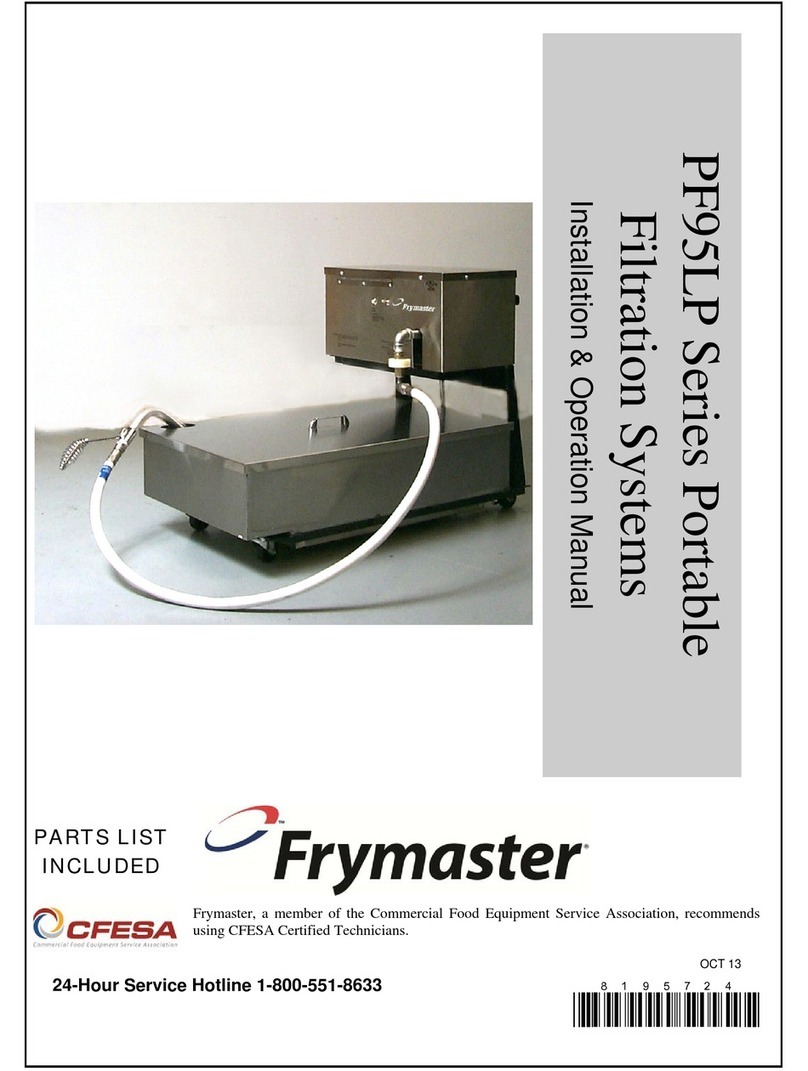
Frymaster
Frymaster PF95LP Installation & operation manual
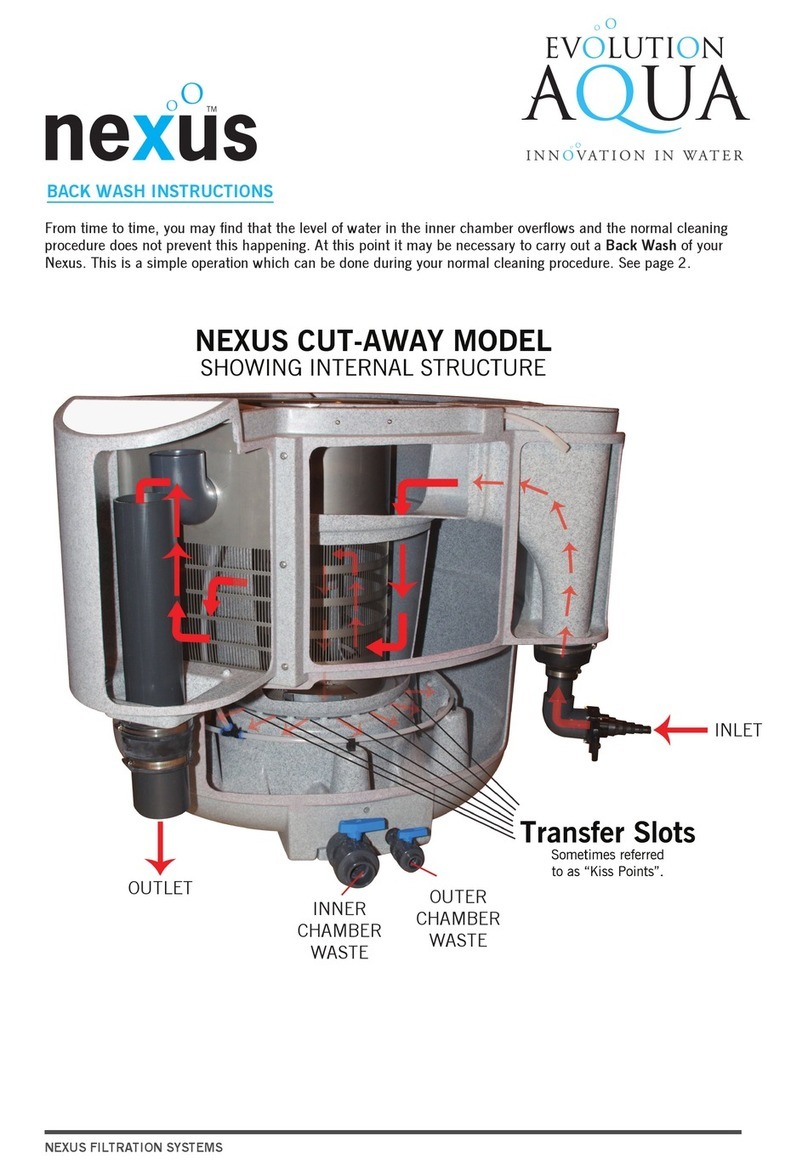
Evolution Aqua
Evolution Aqua NExus 300 instructions
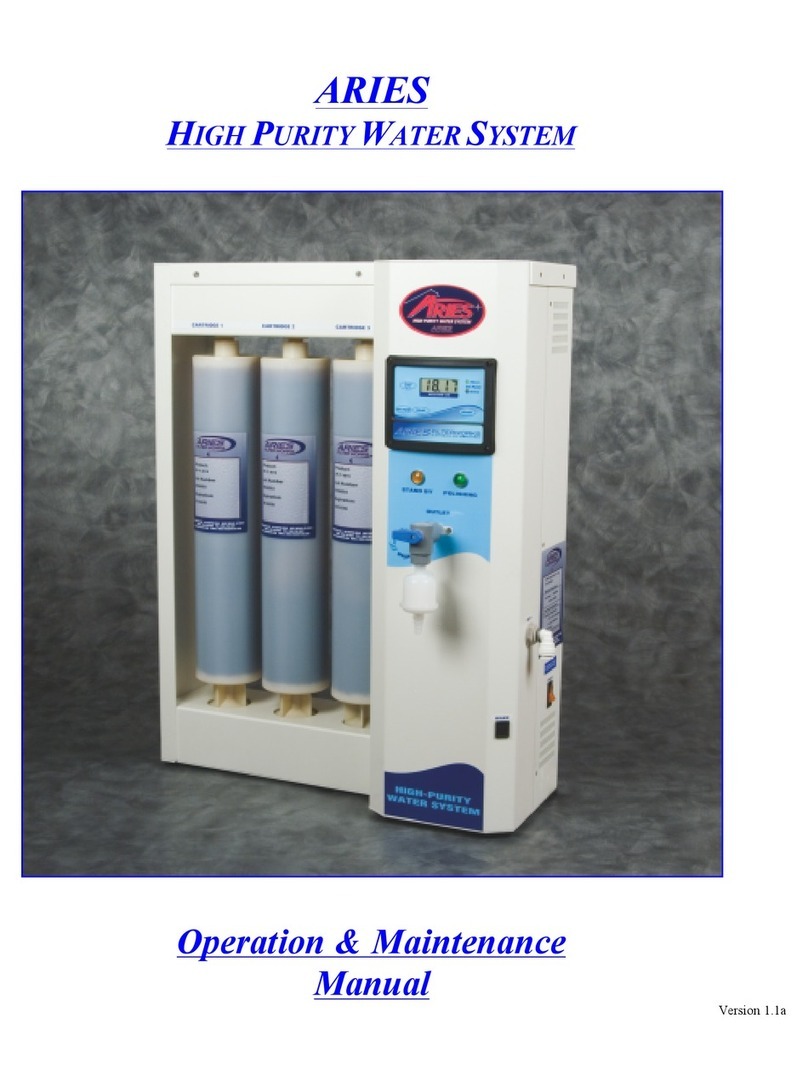
Aries
Aries HIGH PURITY WATER SYSTEM Operation & maintenance manual
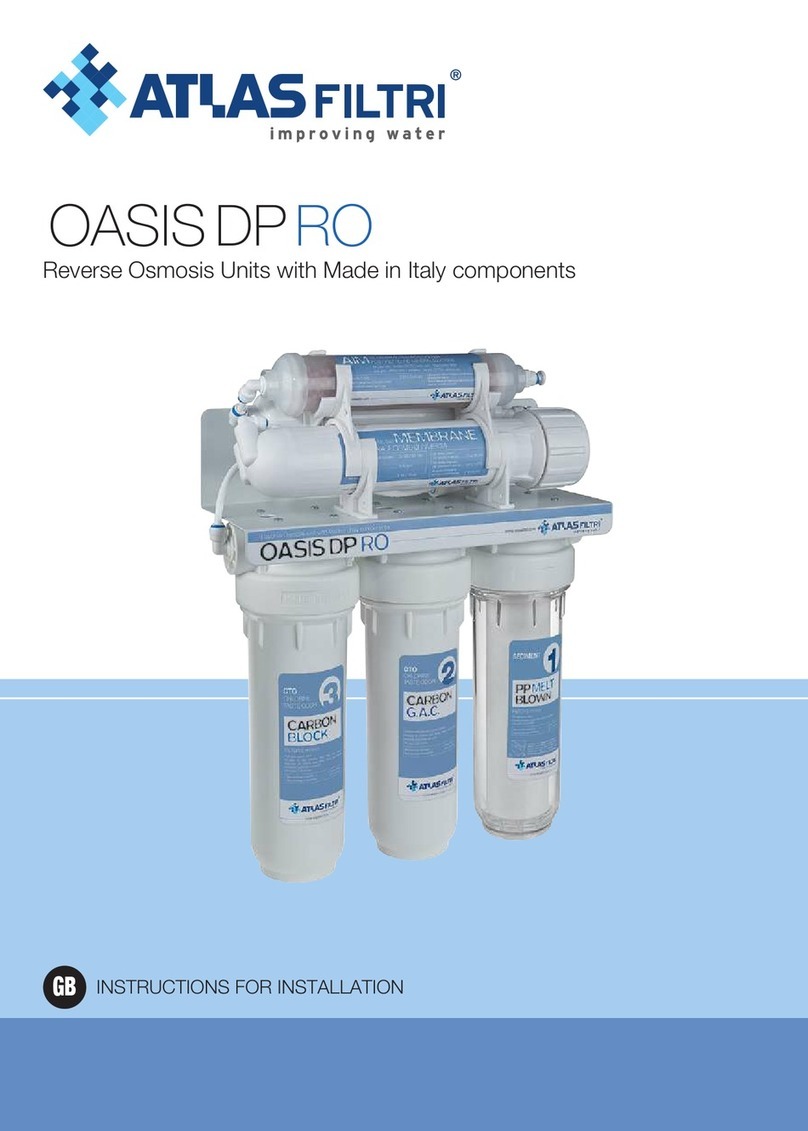
Atlas Filtri
Atlas Filtri OASIS DP RO Instructions for installation
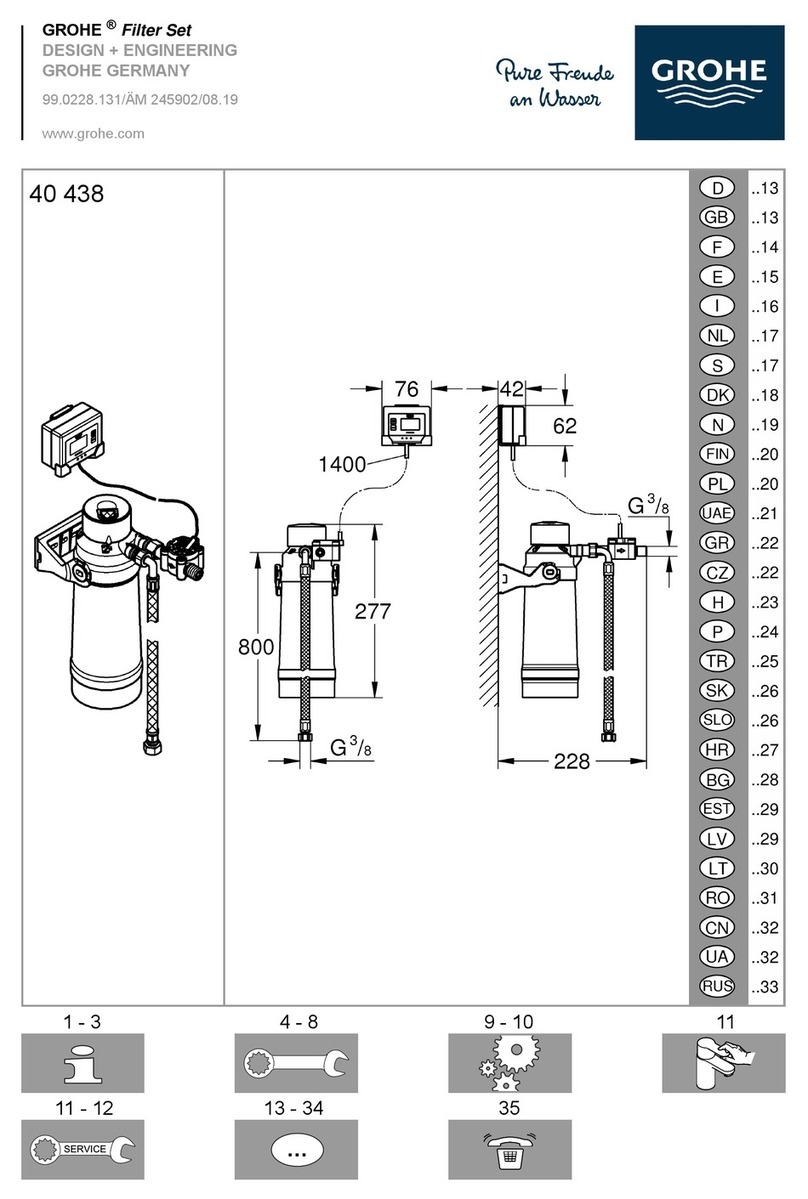
Grohe
Grohe 40 438 manual
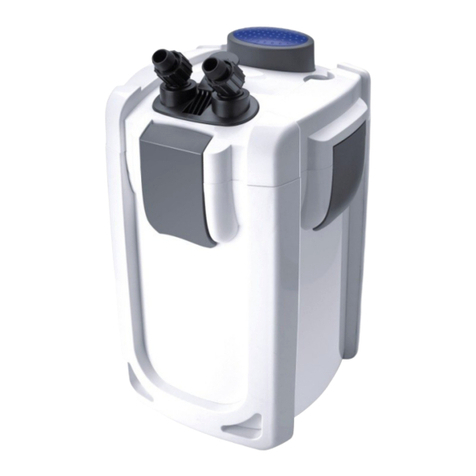
SunSun
SunSun HW-702A Operation manual
